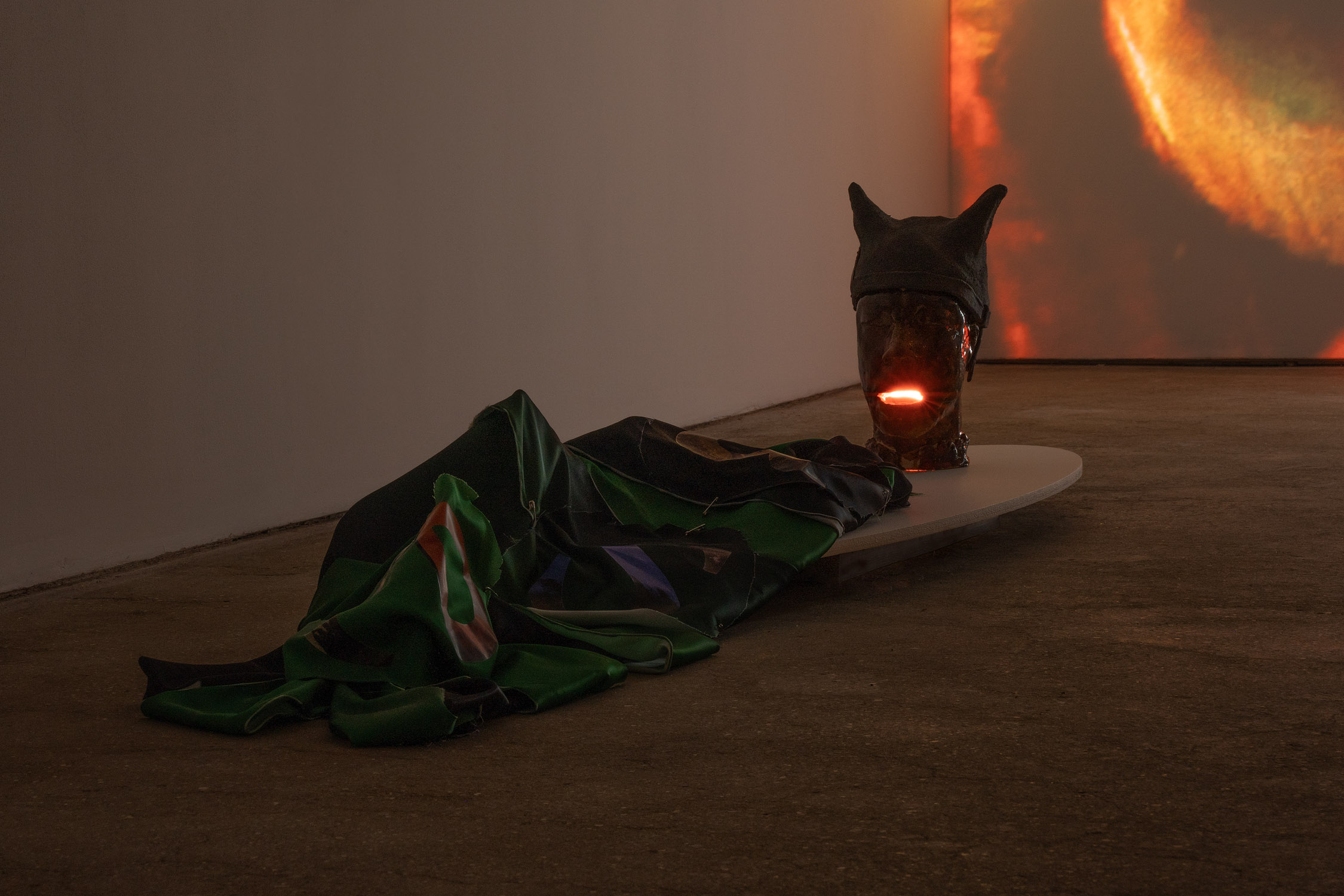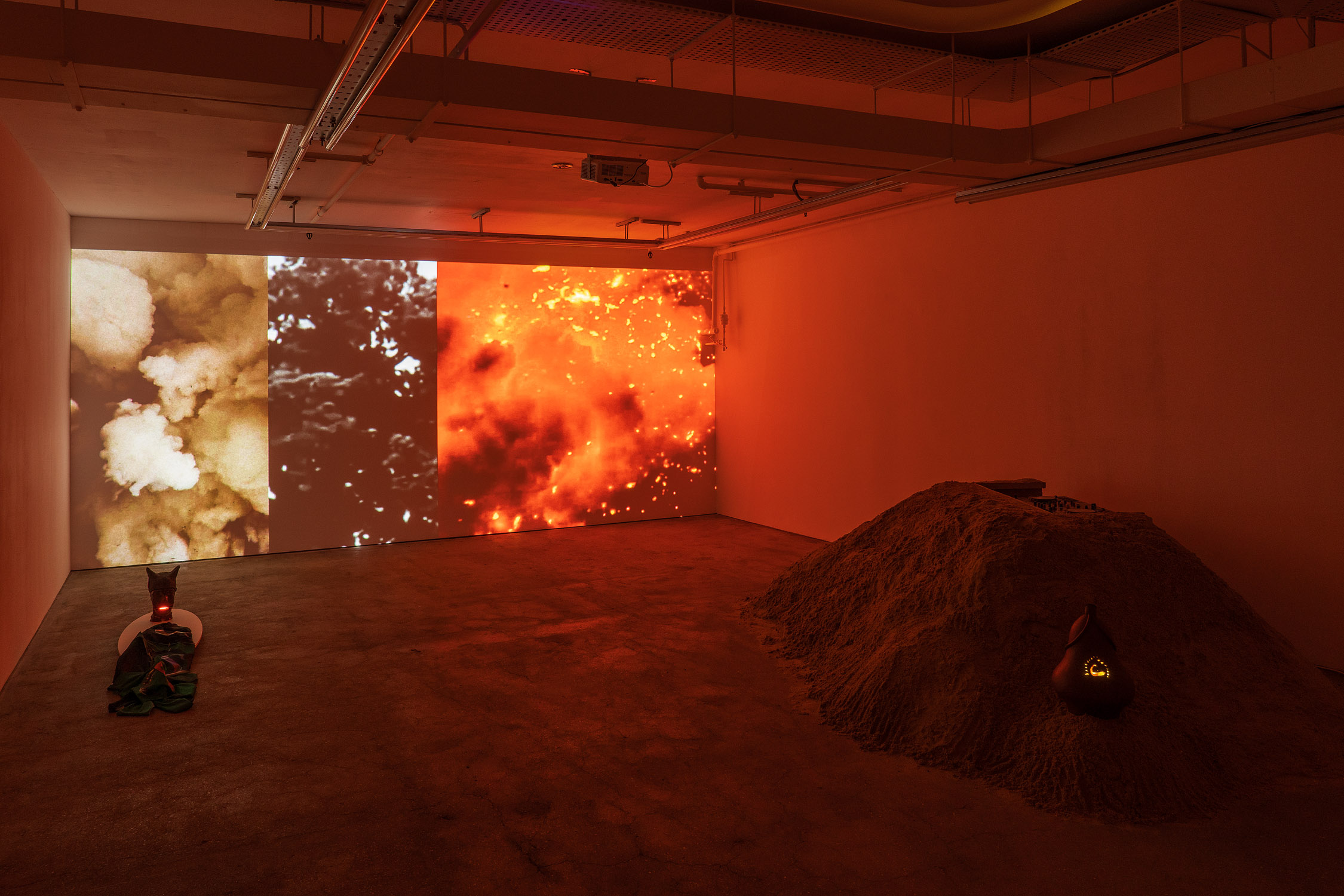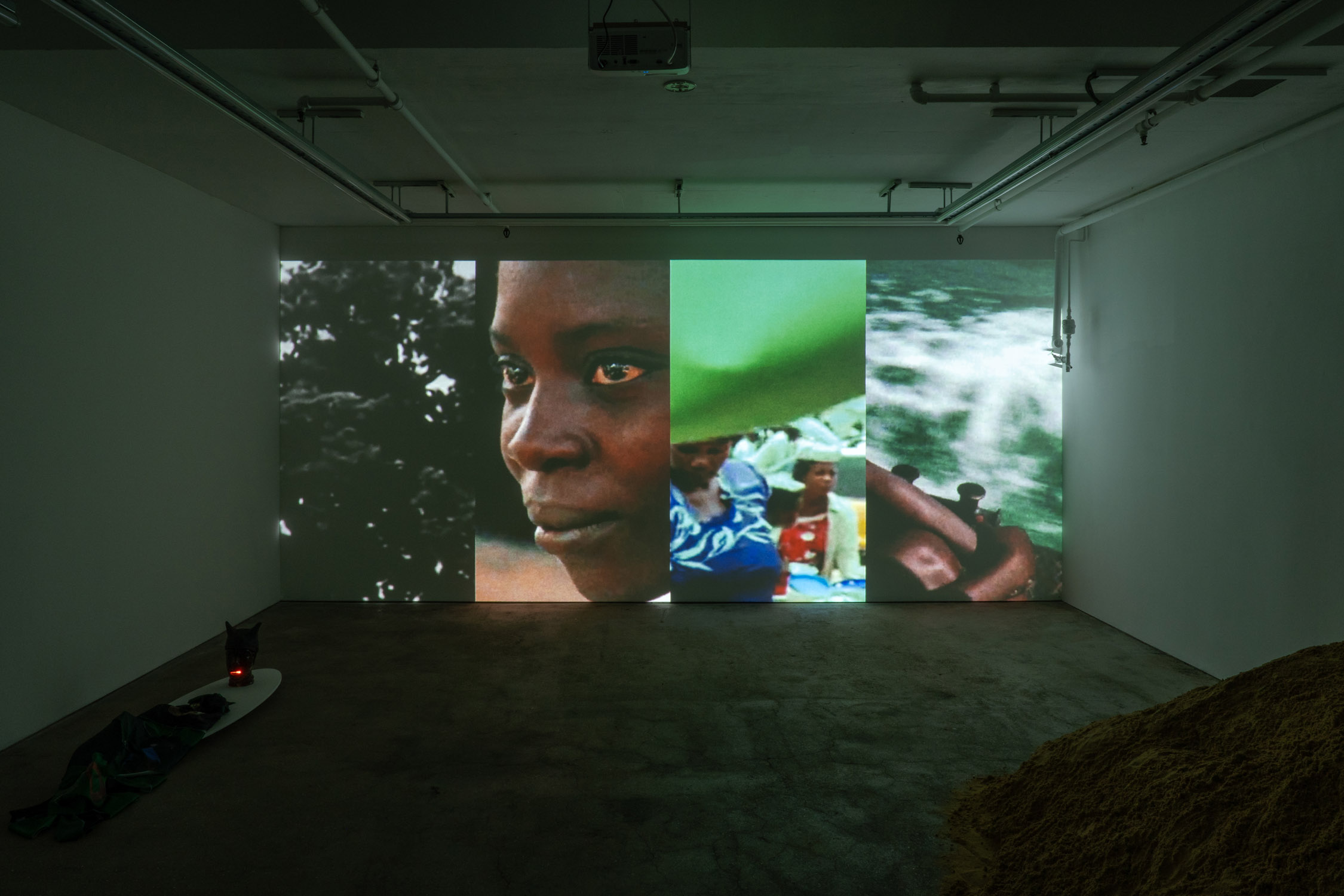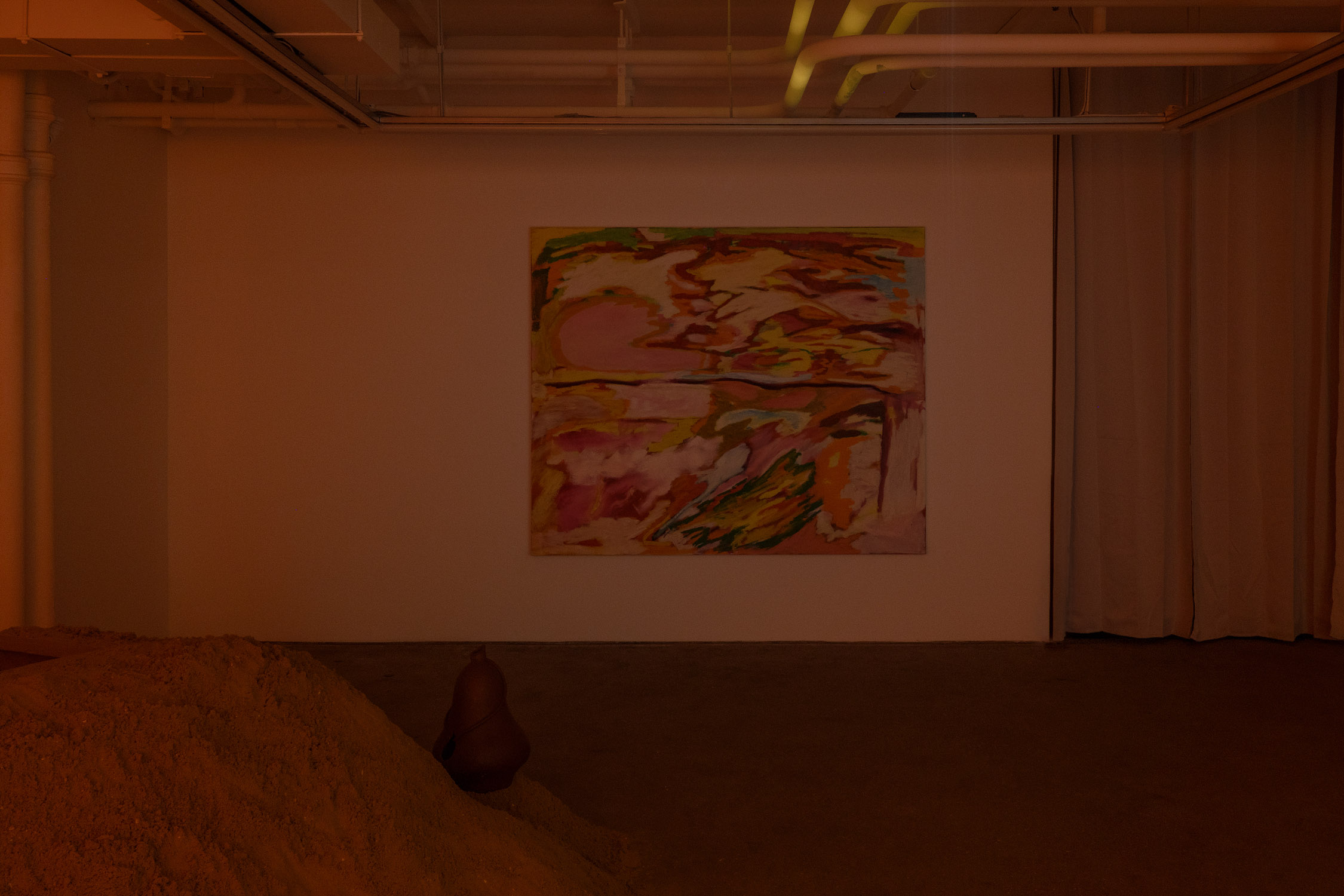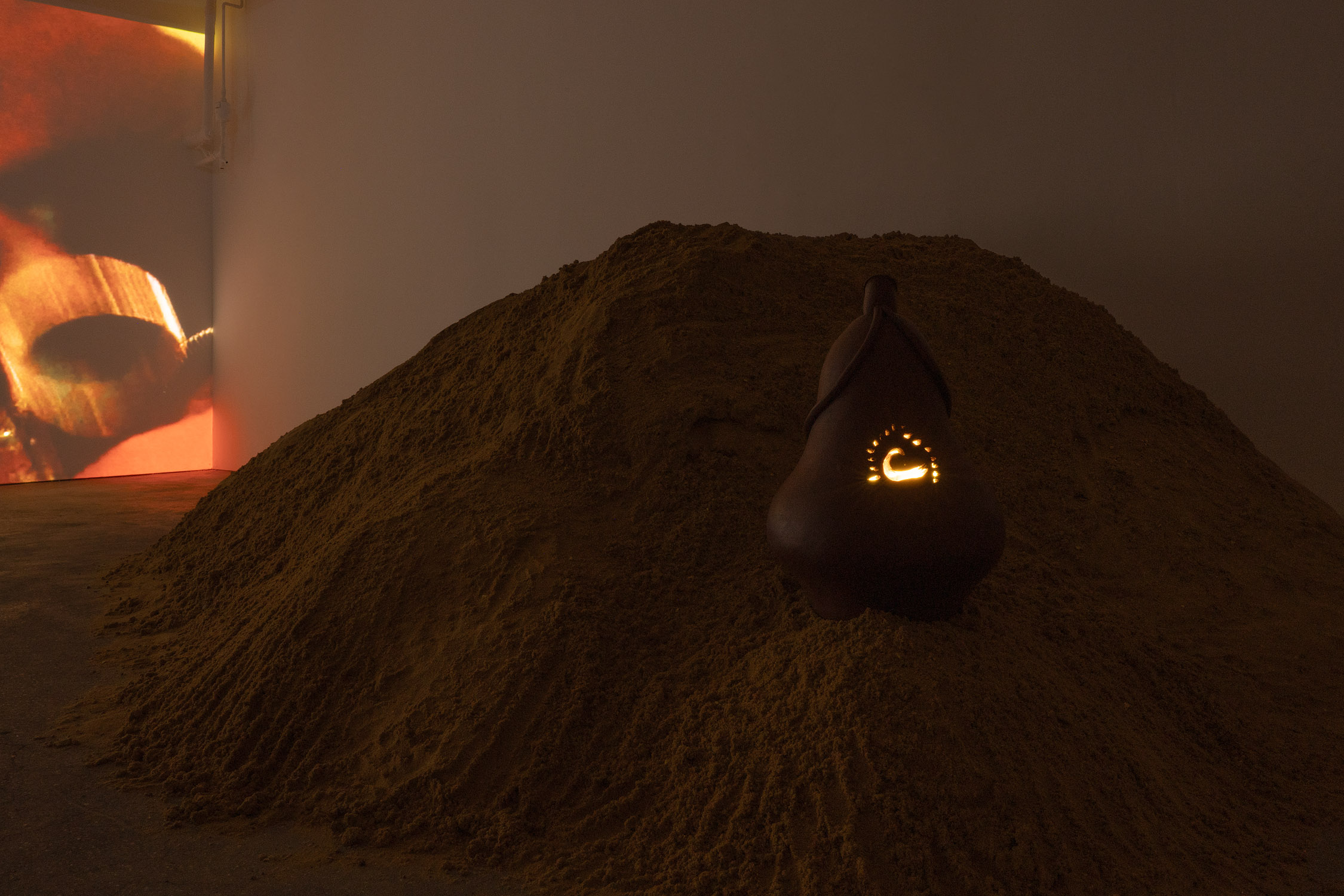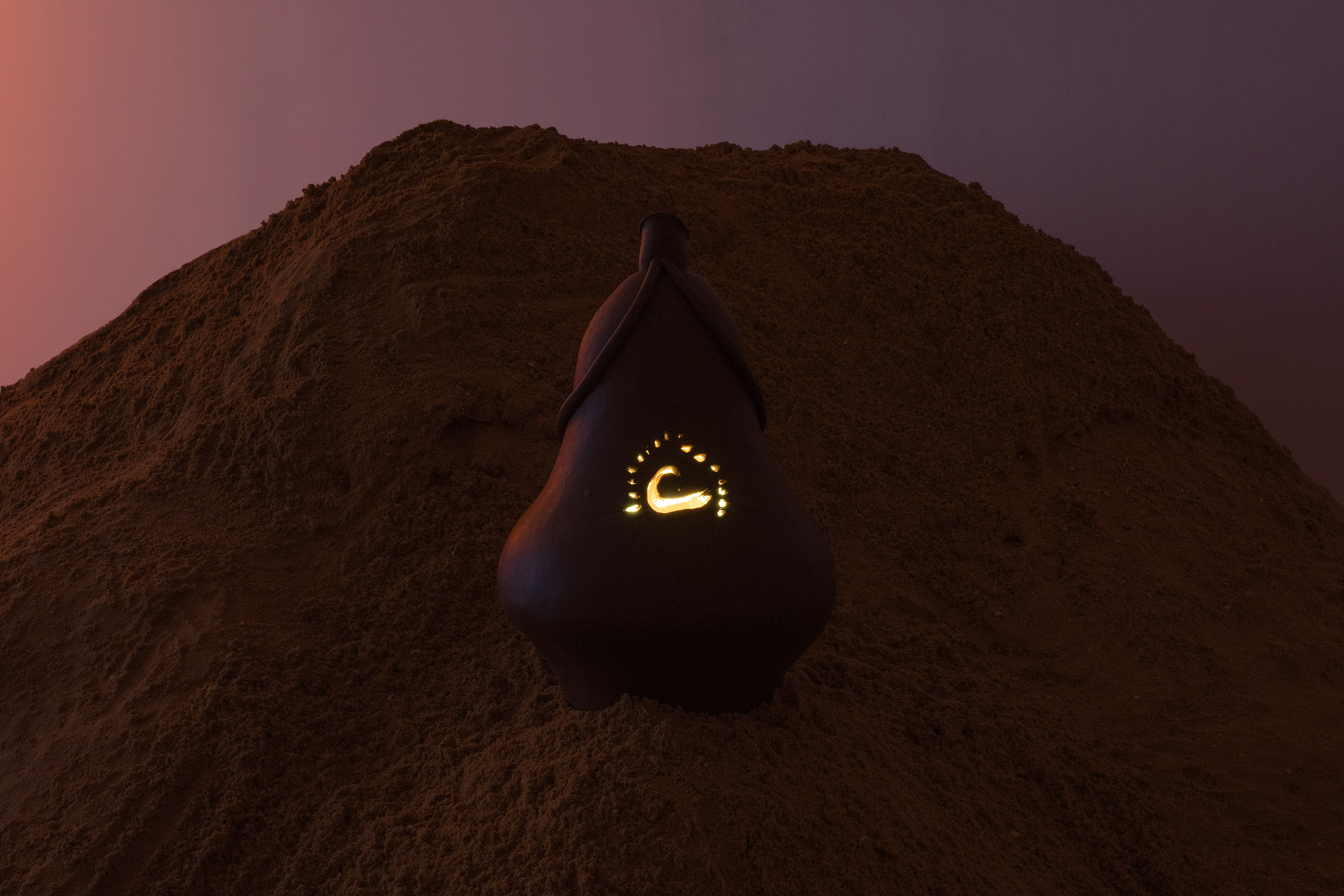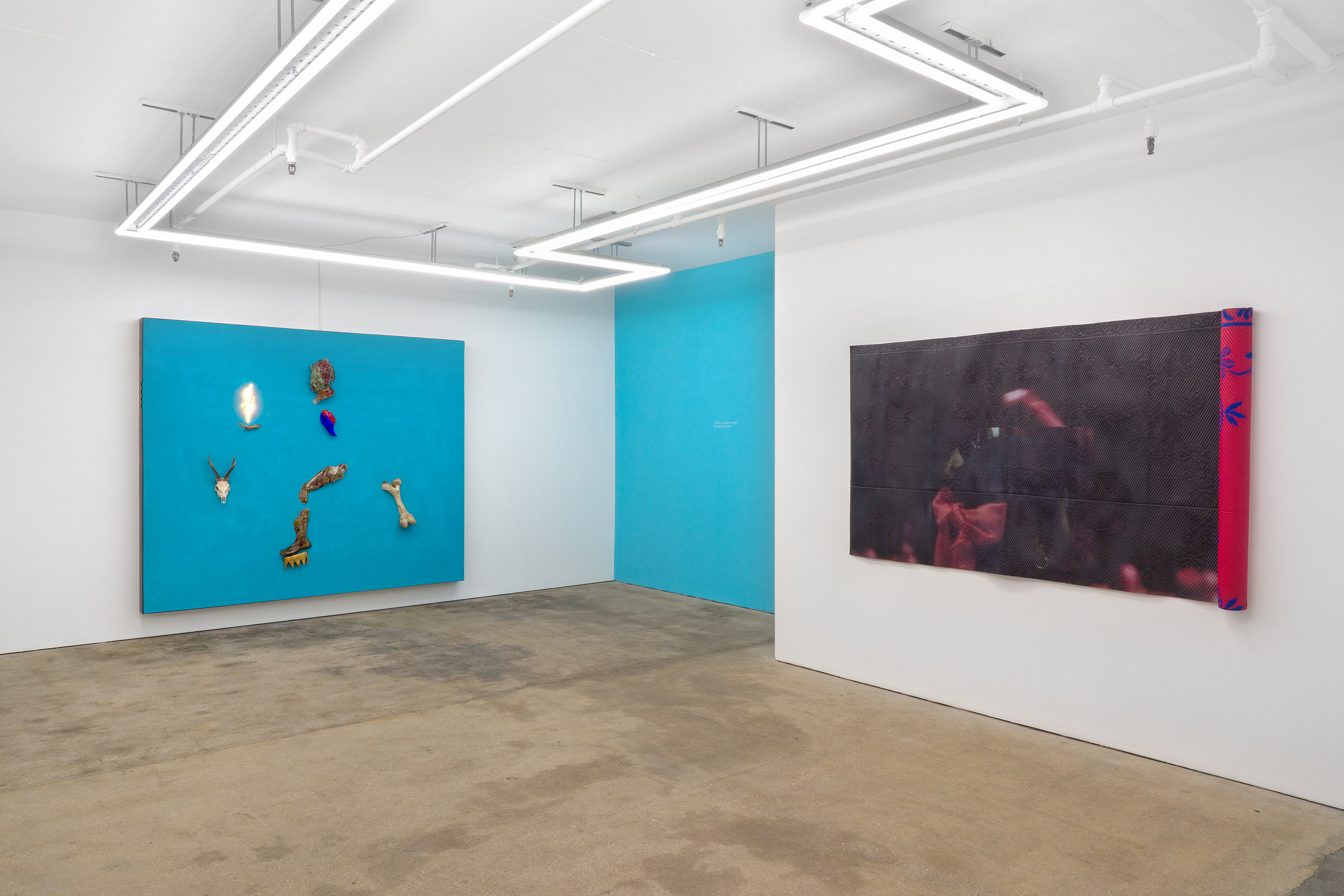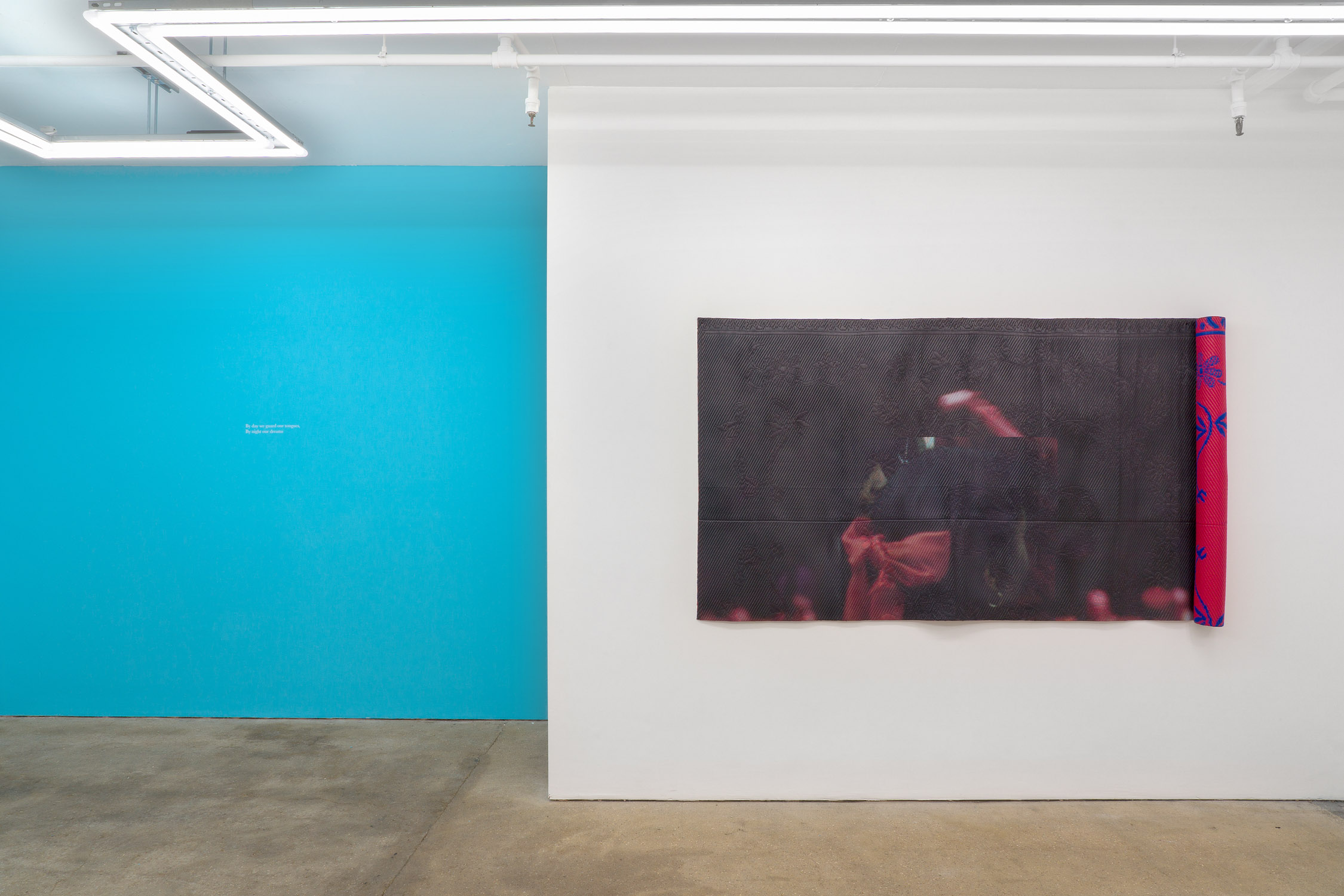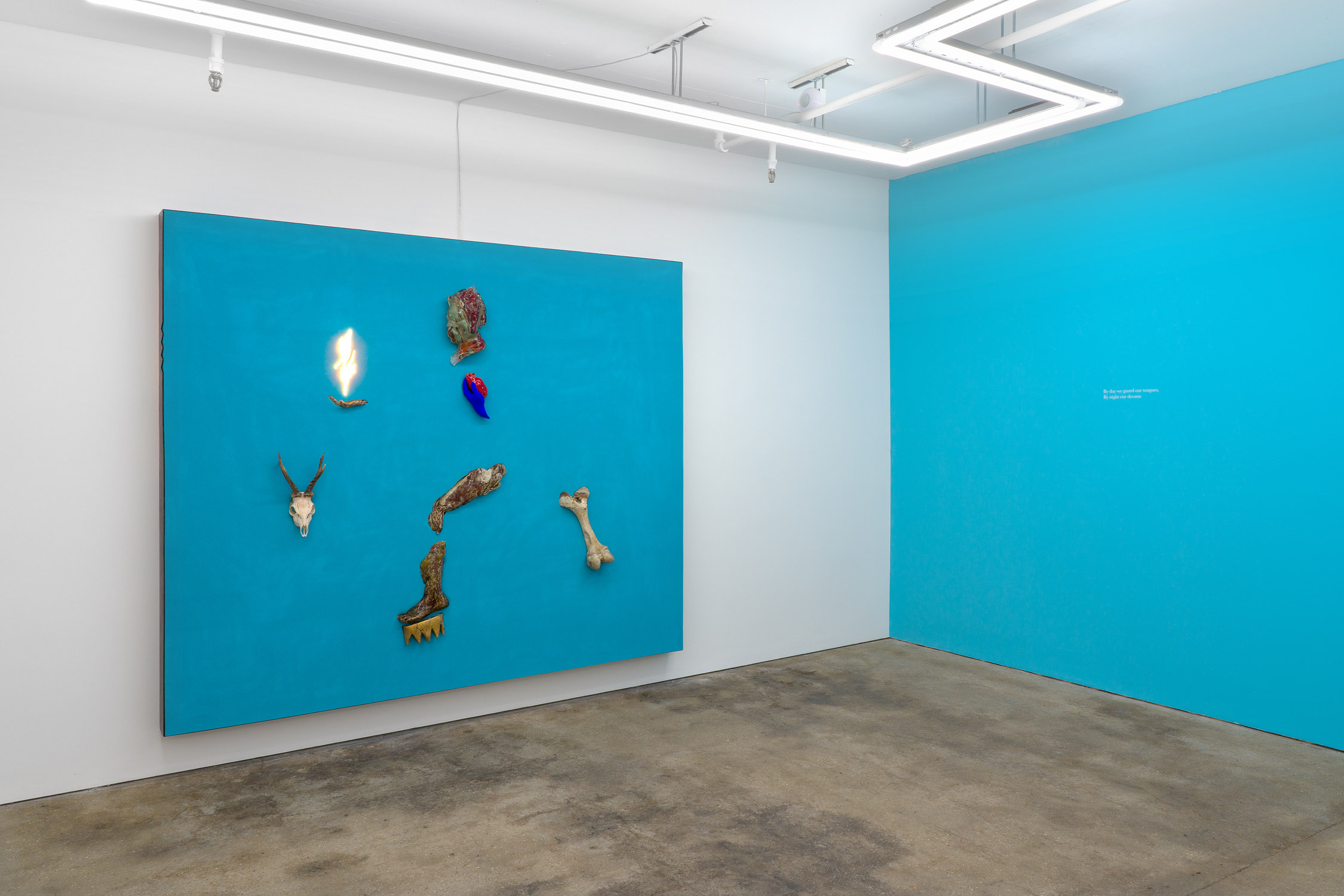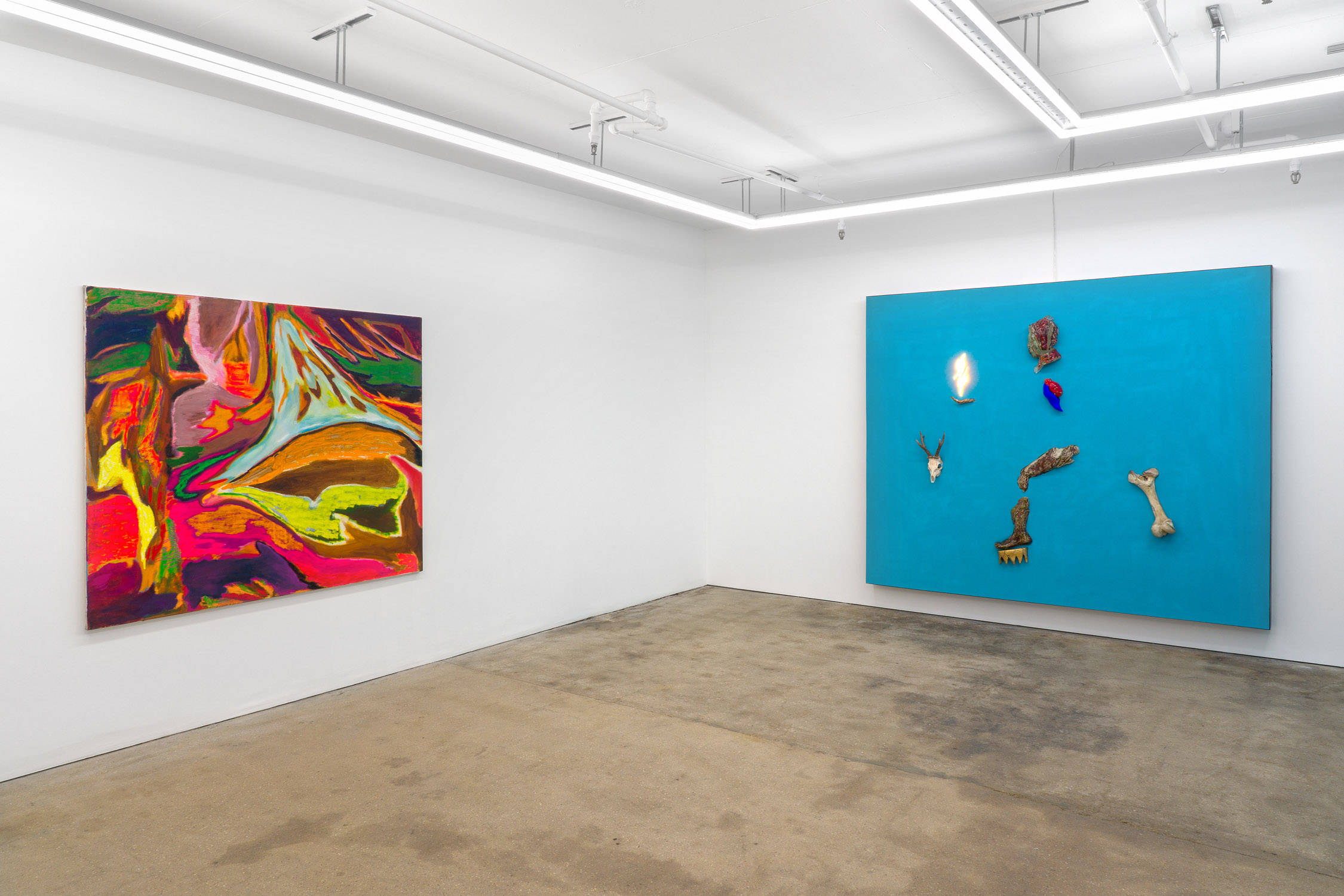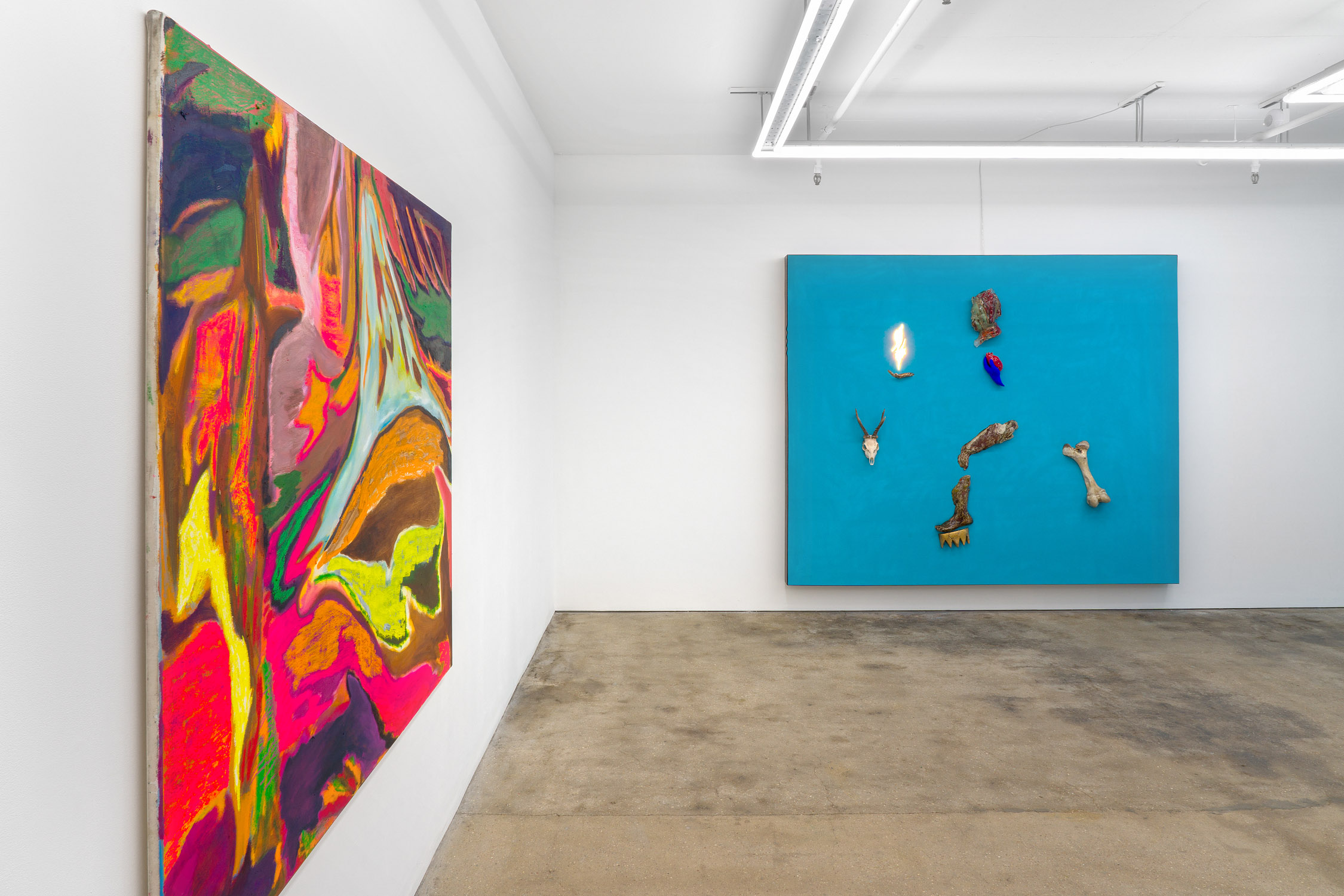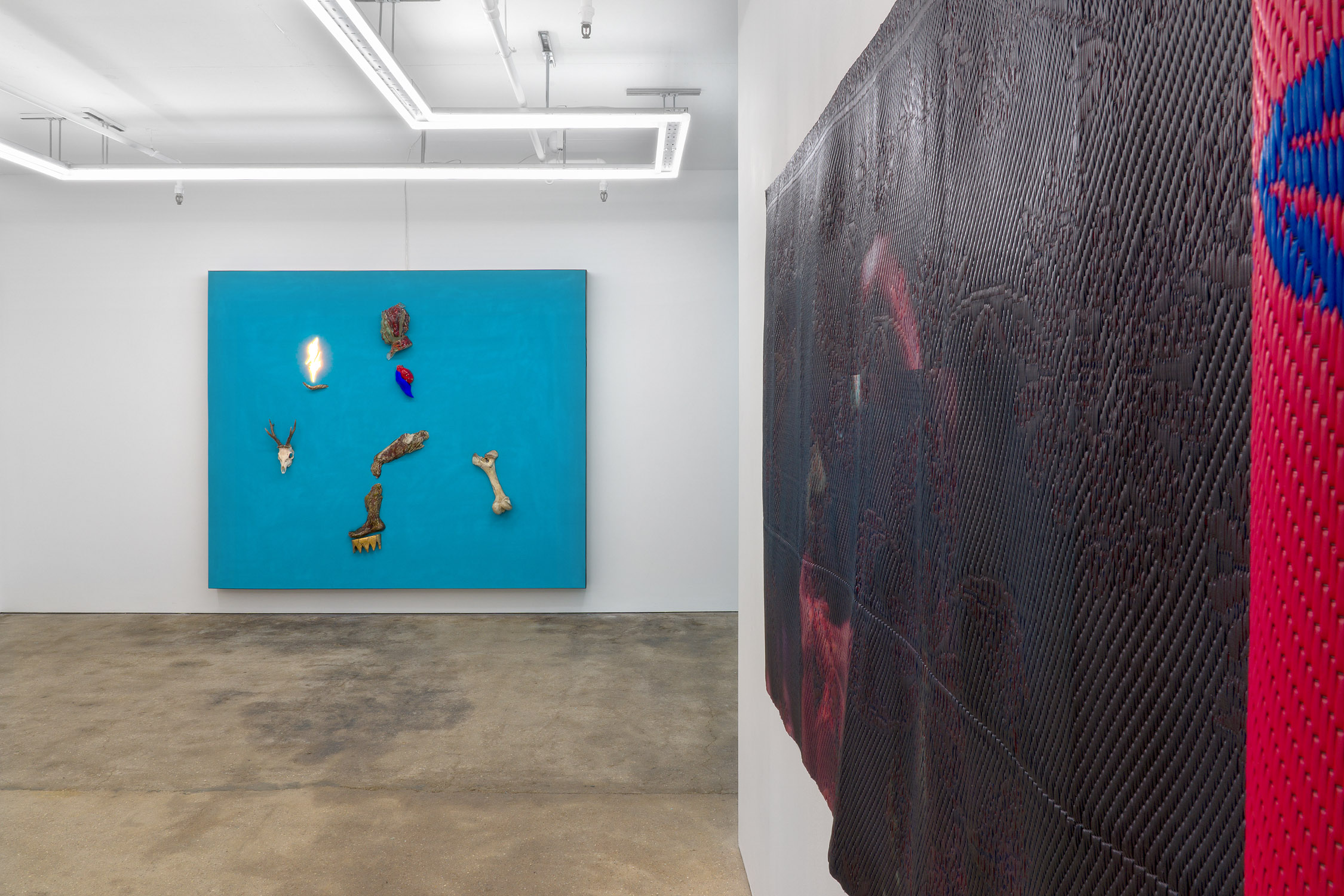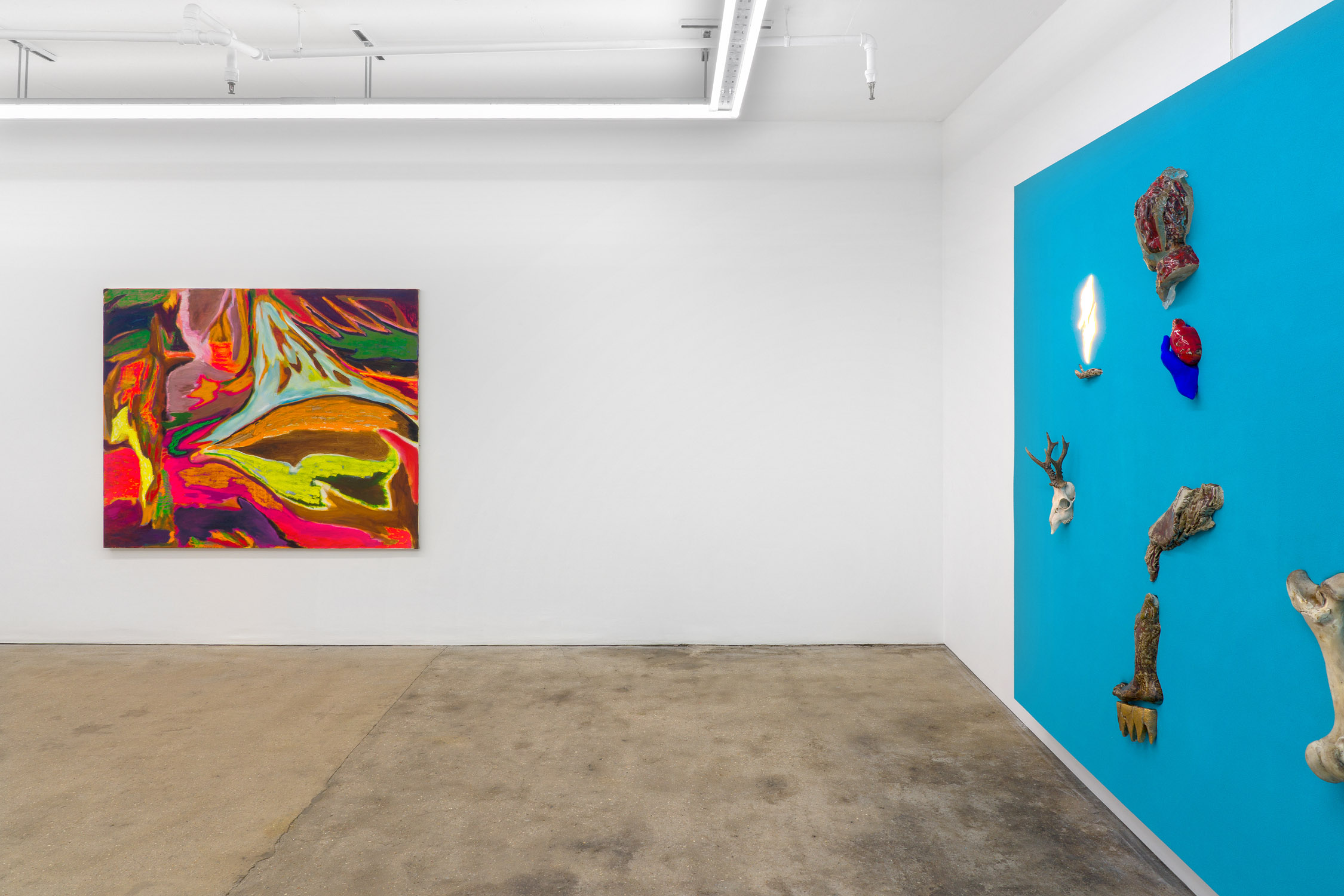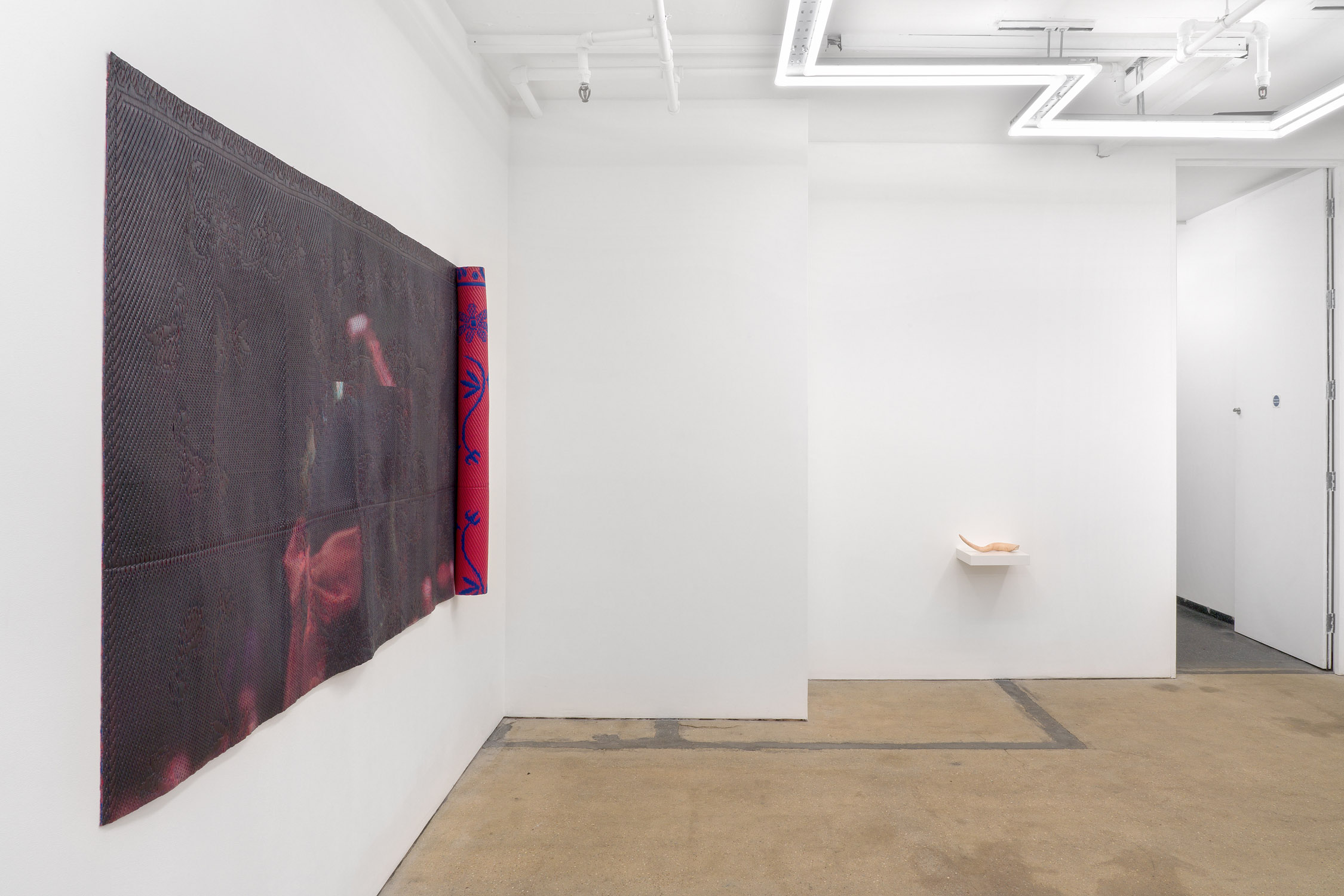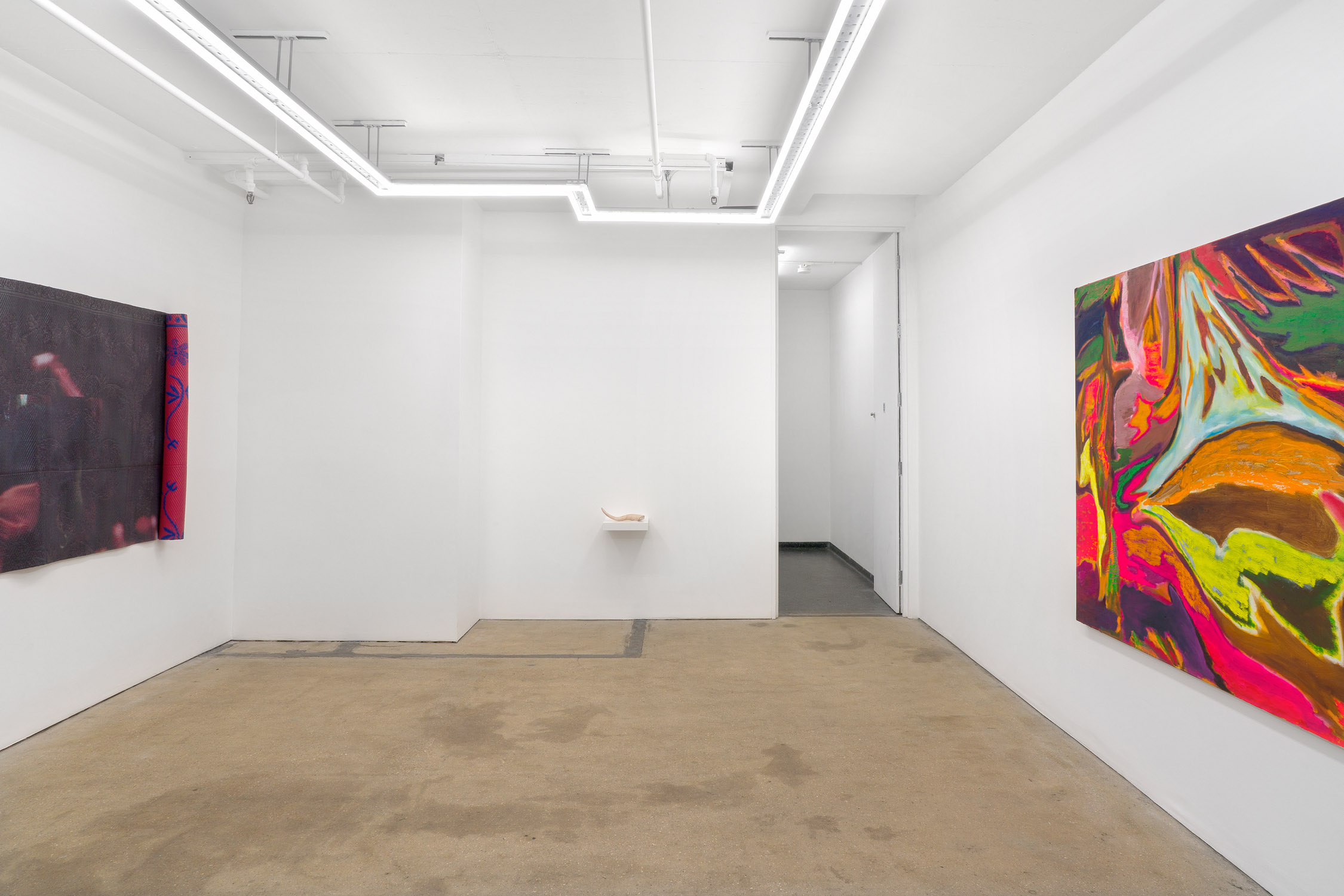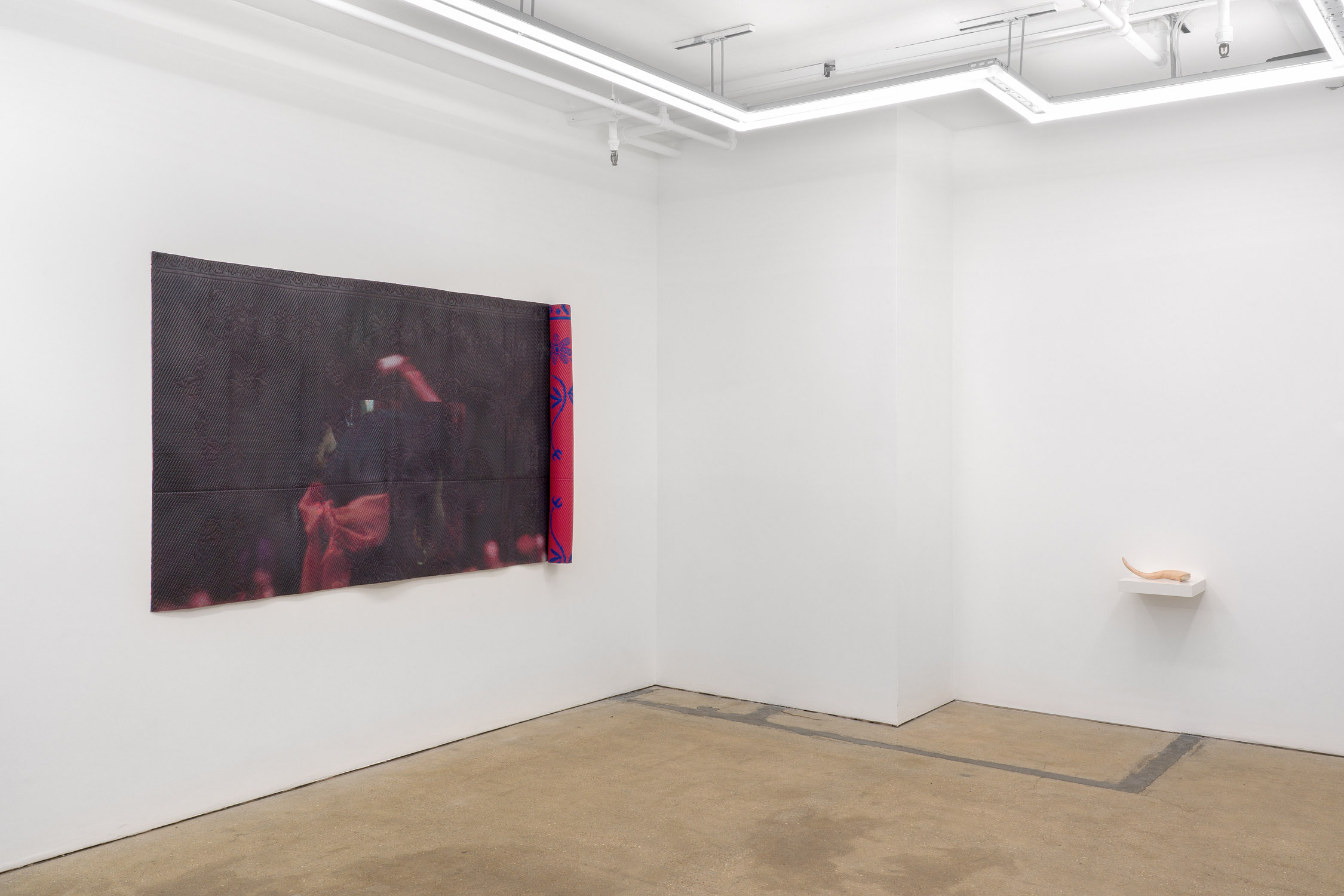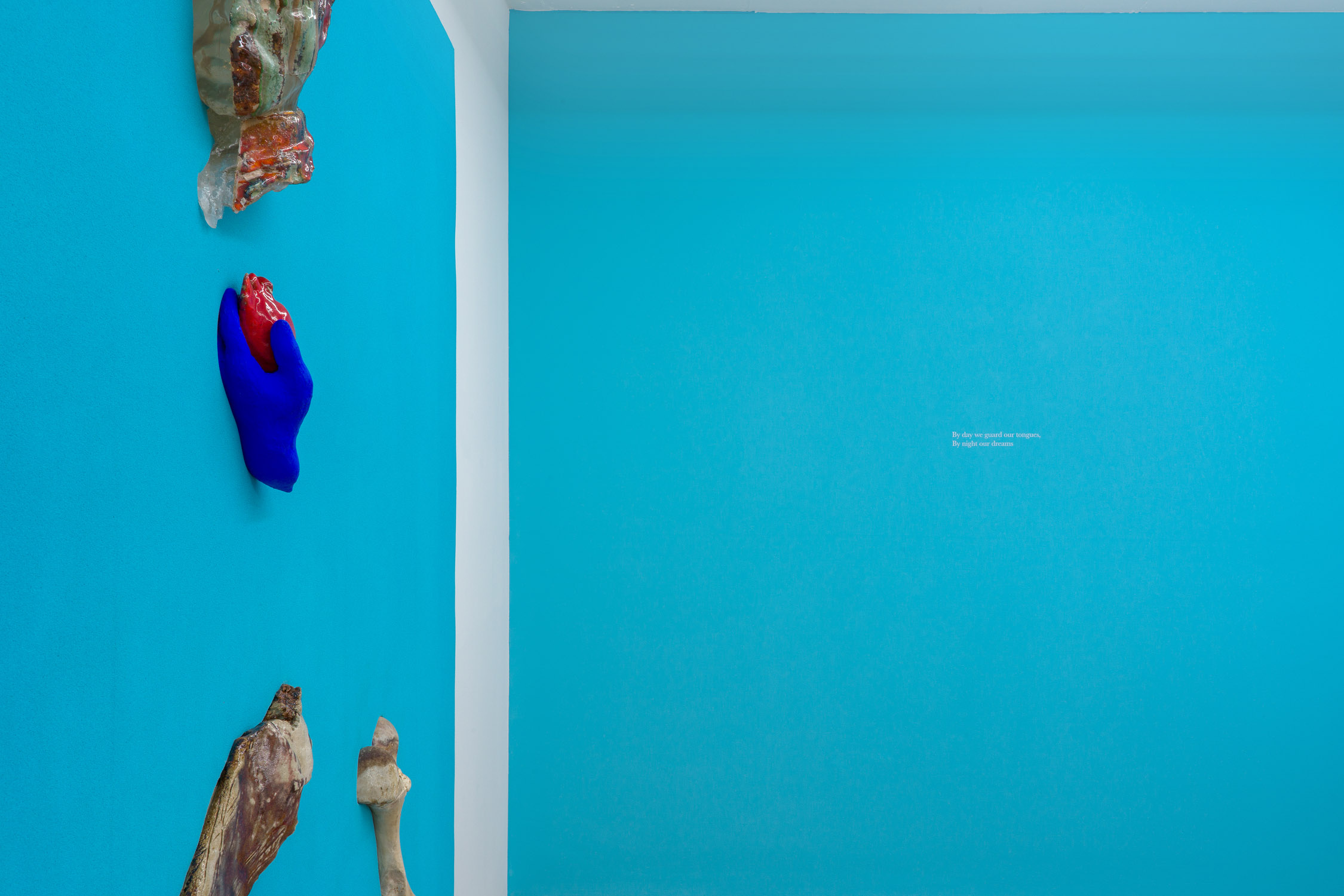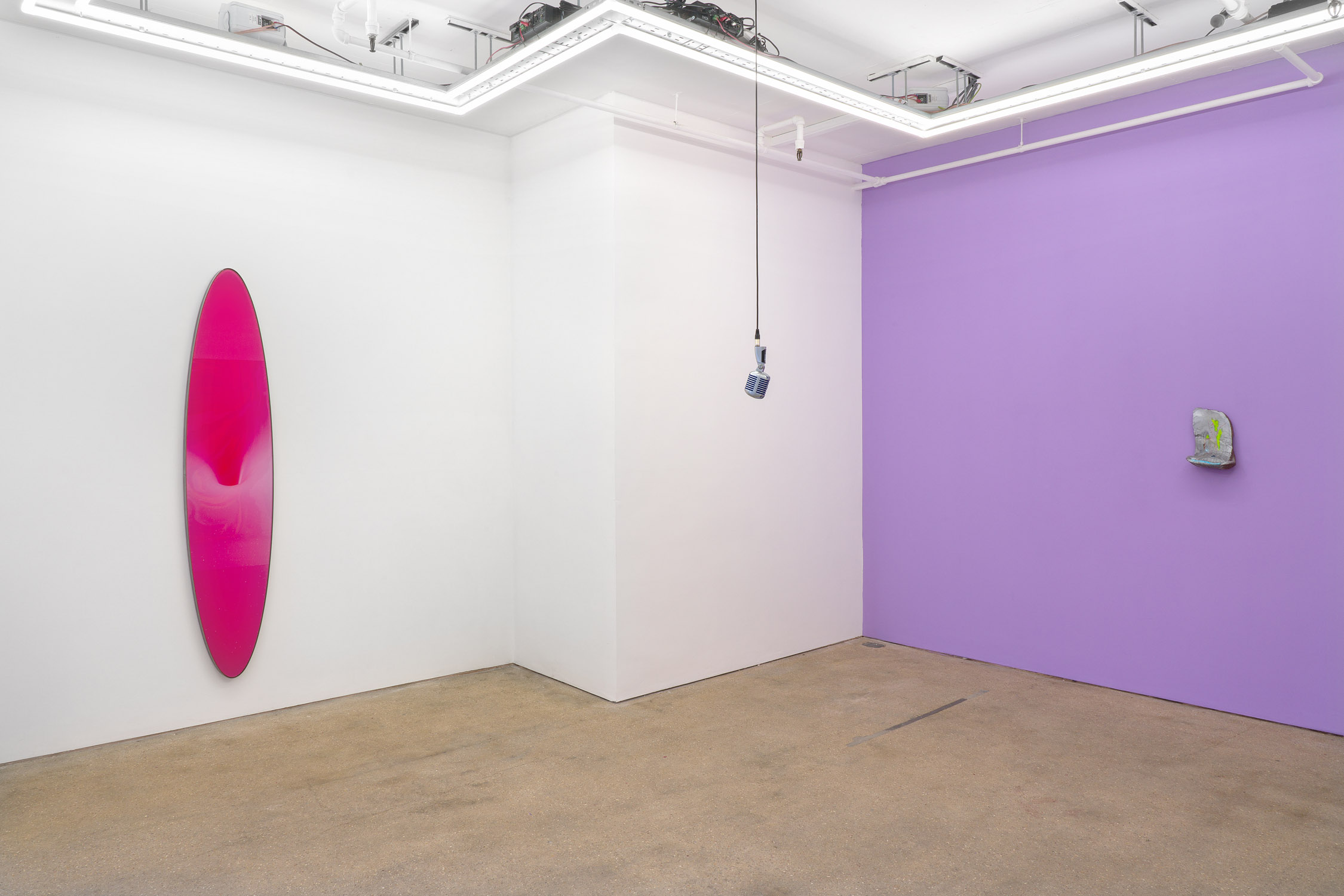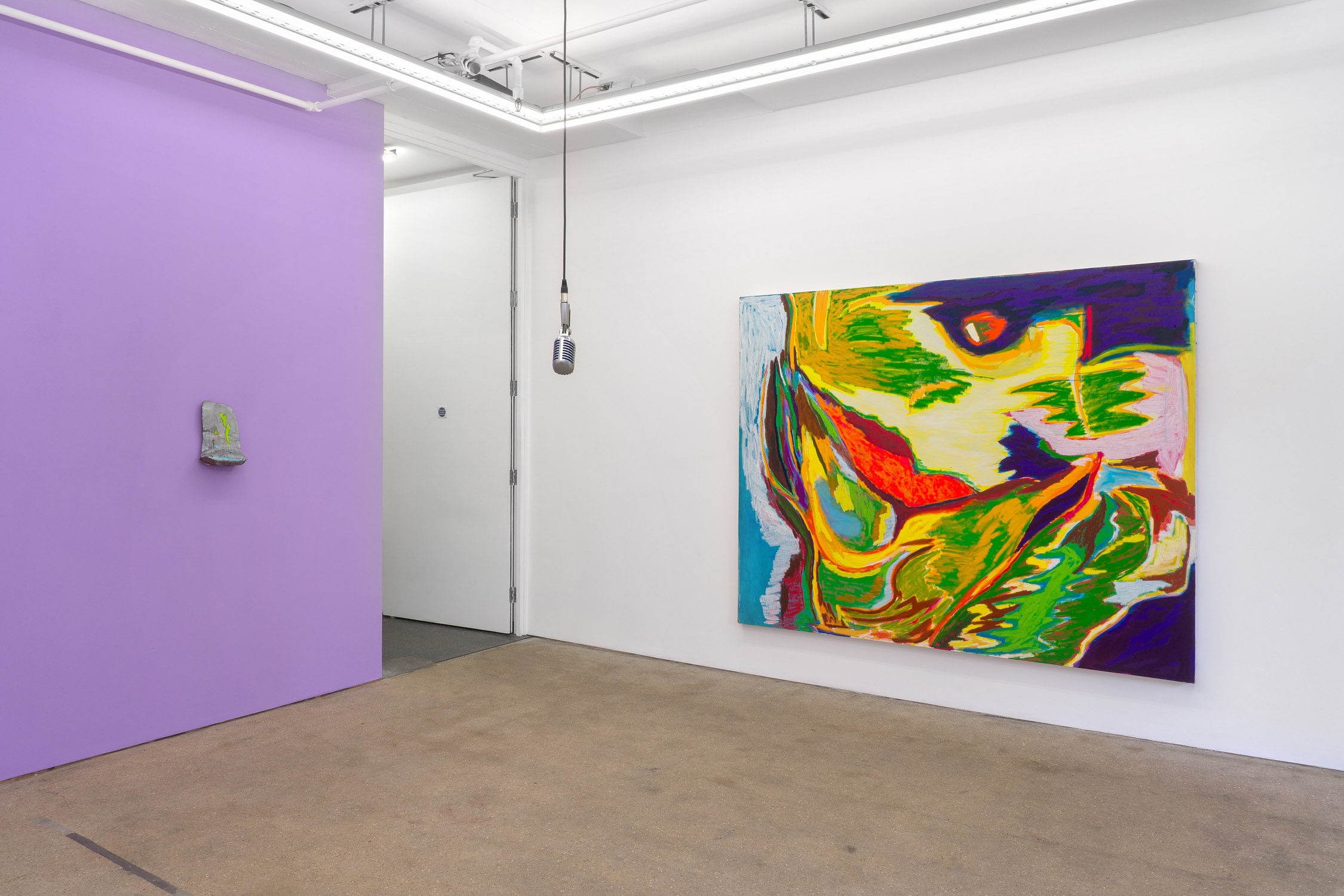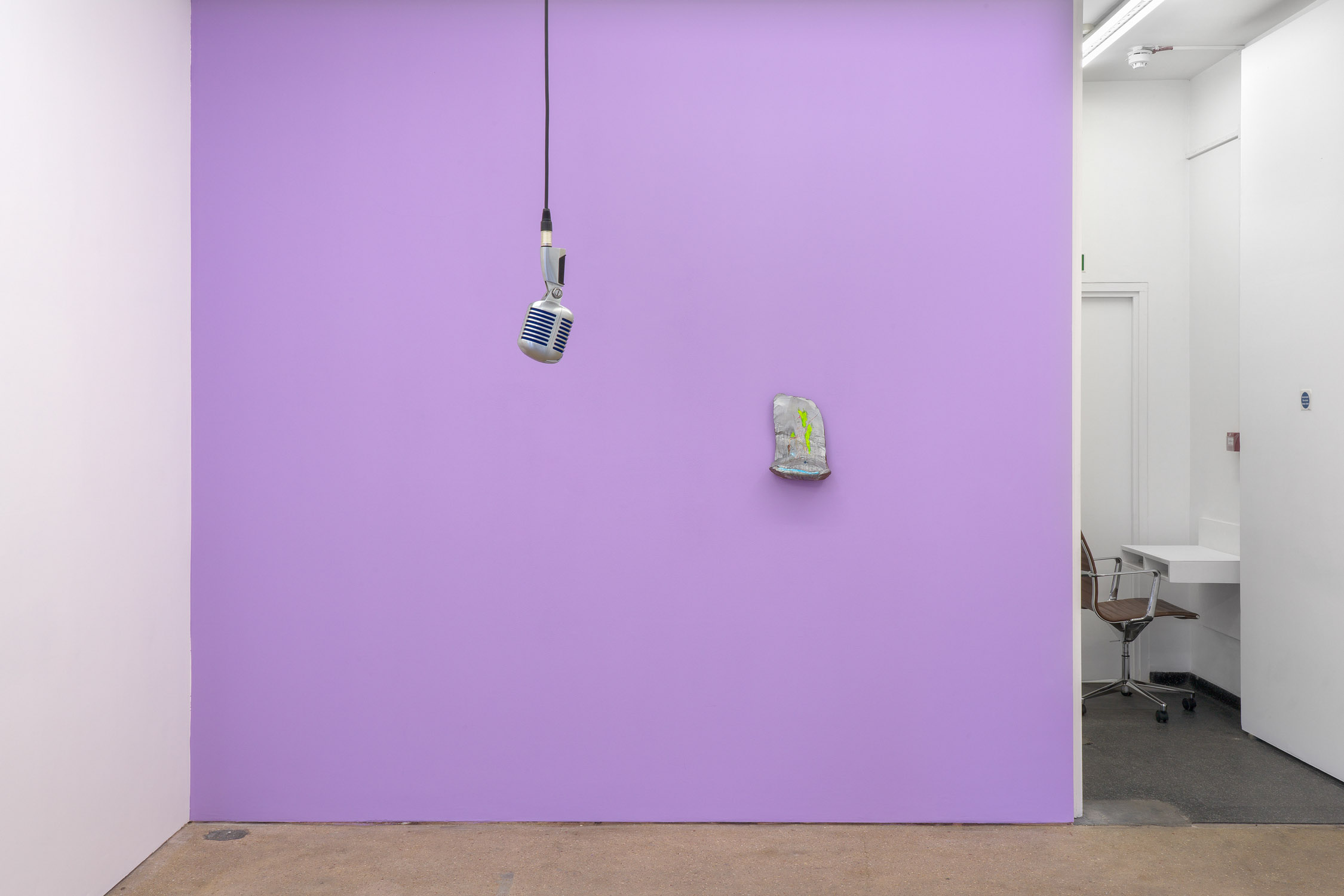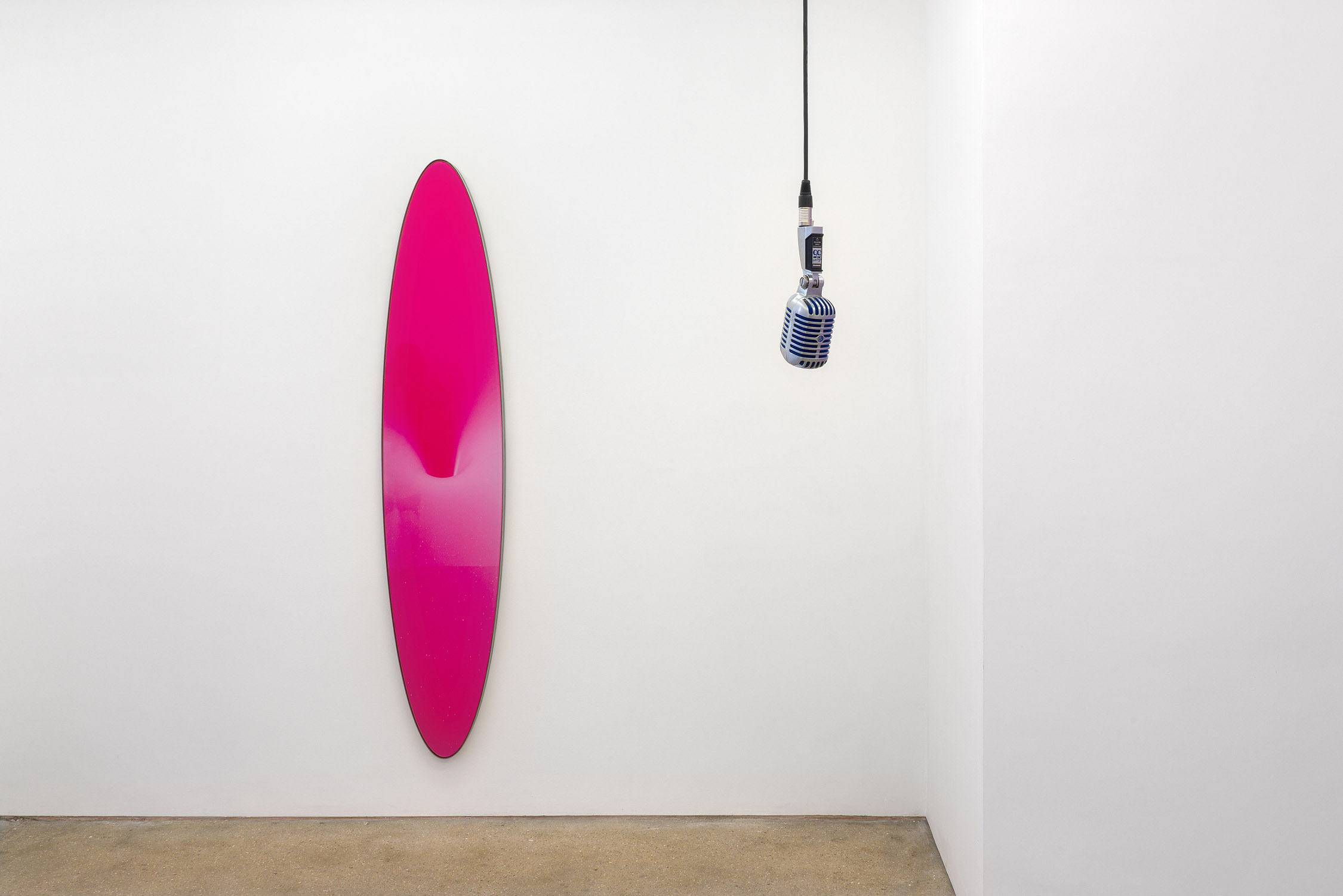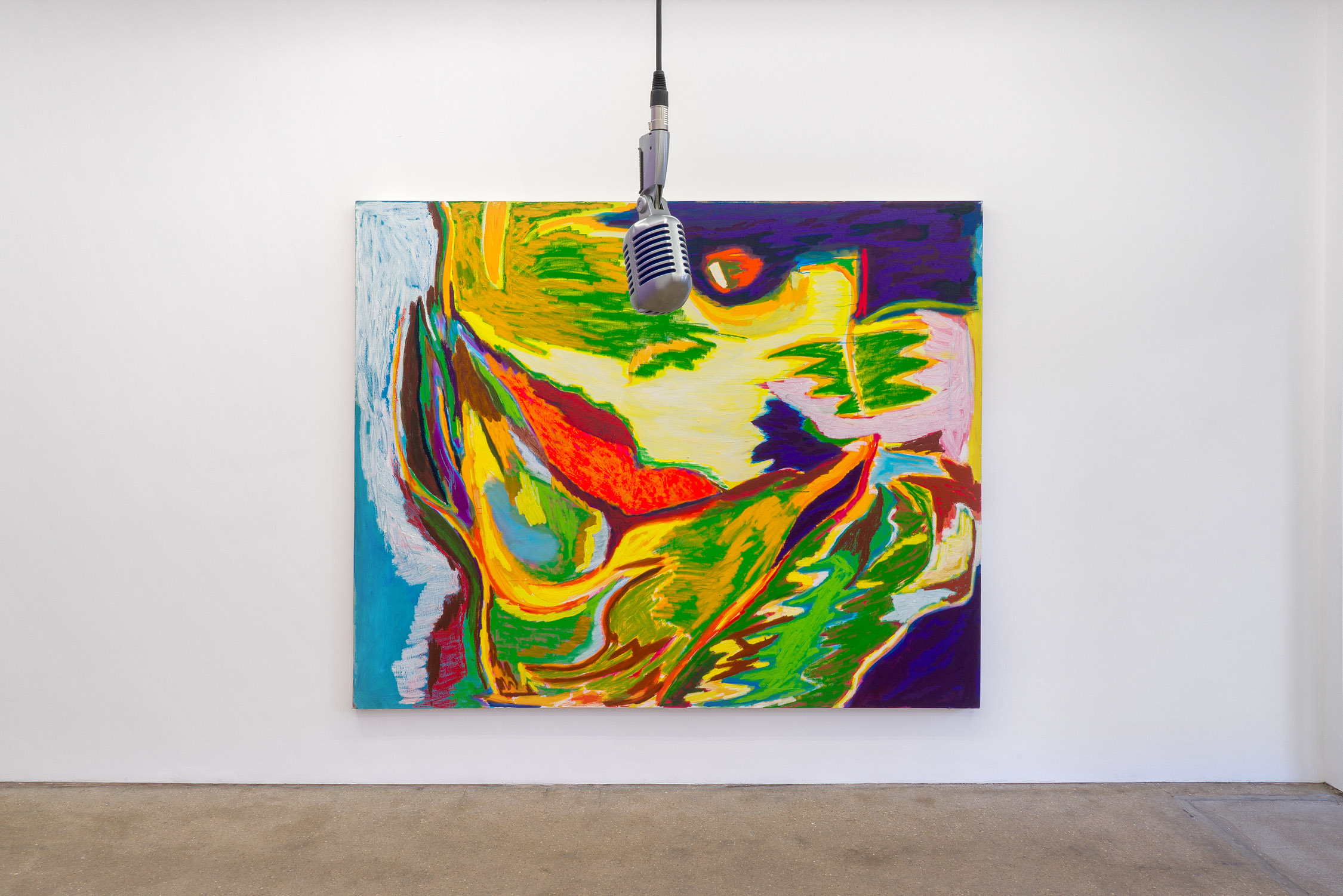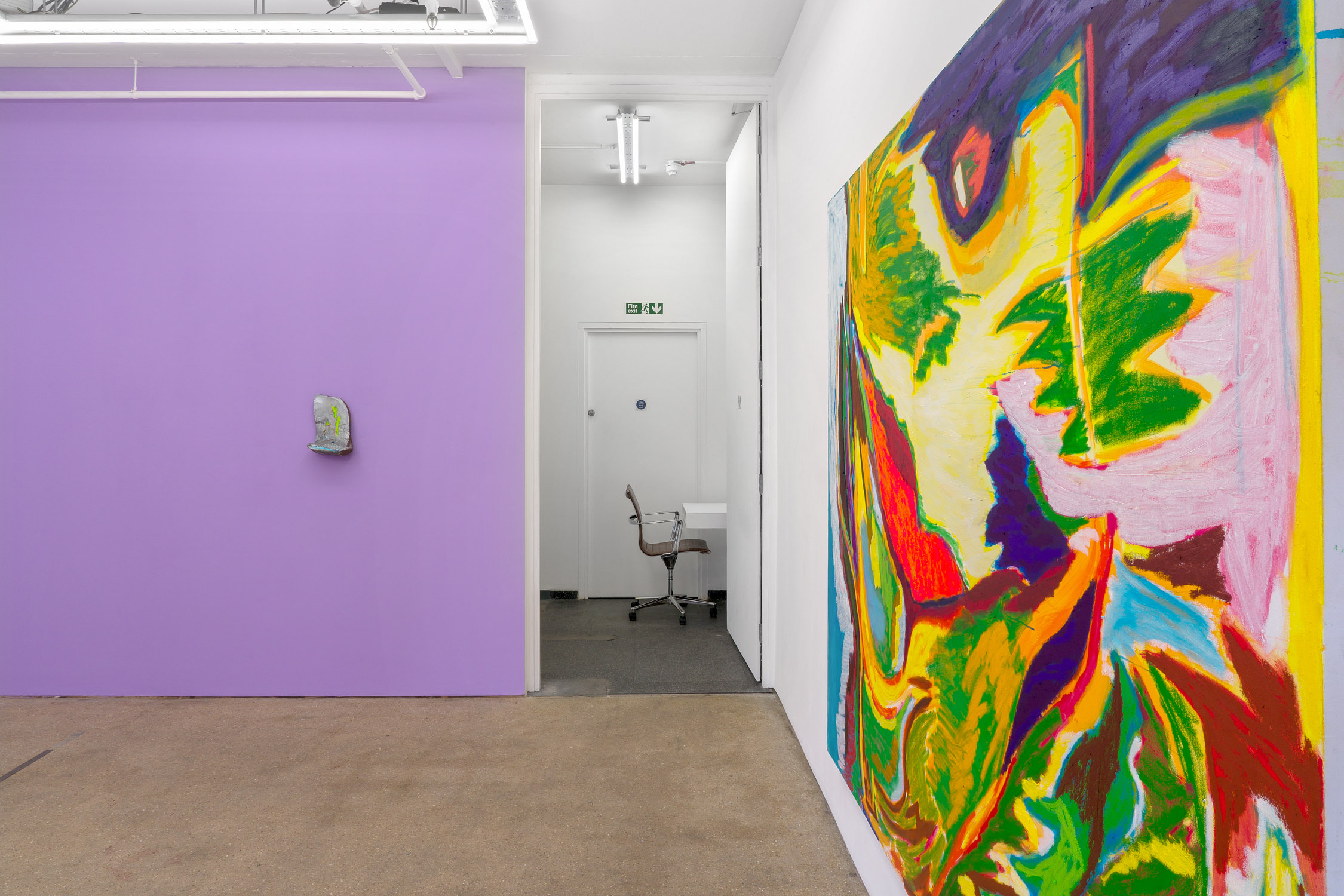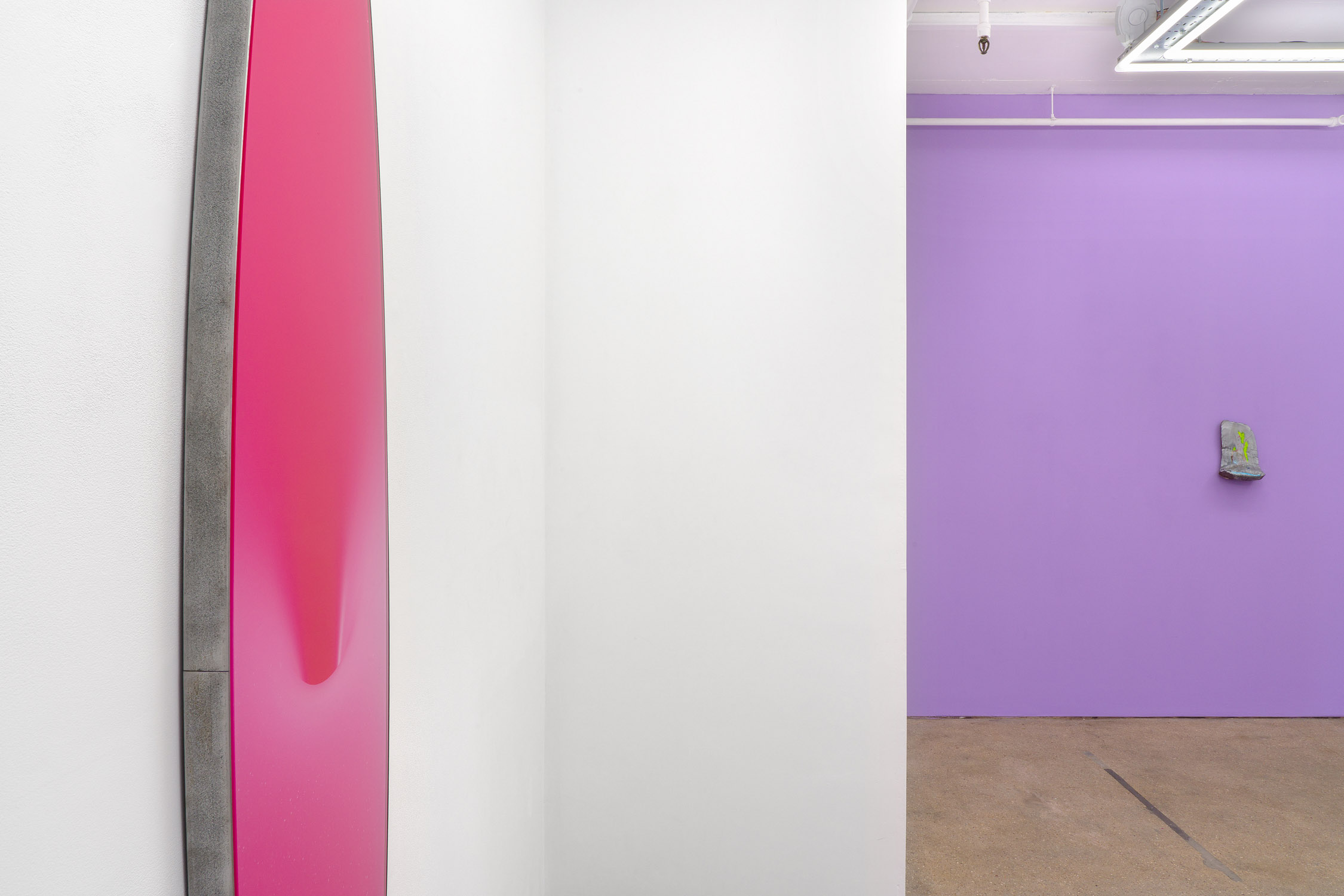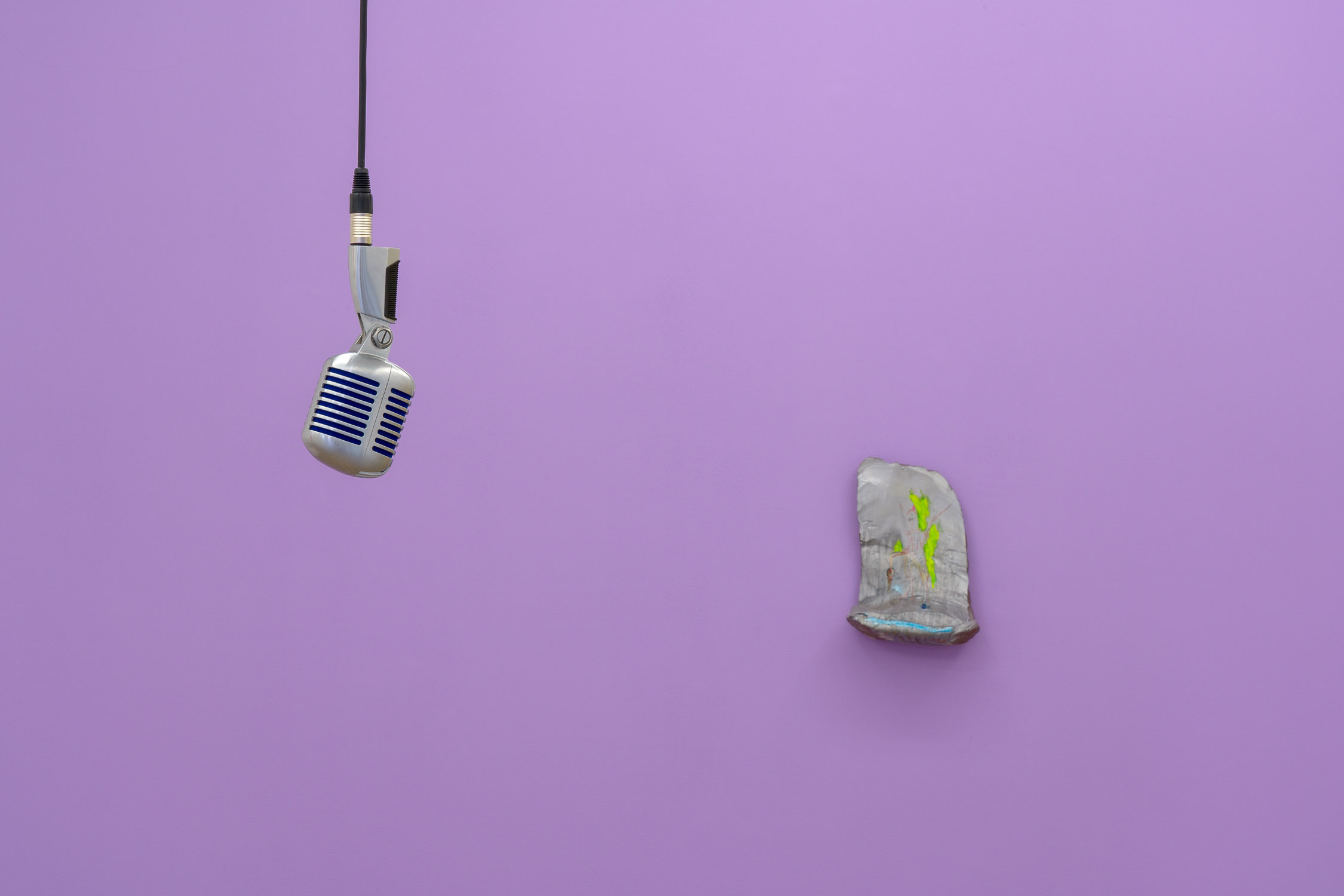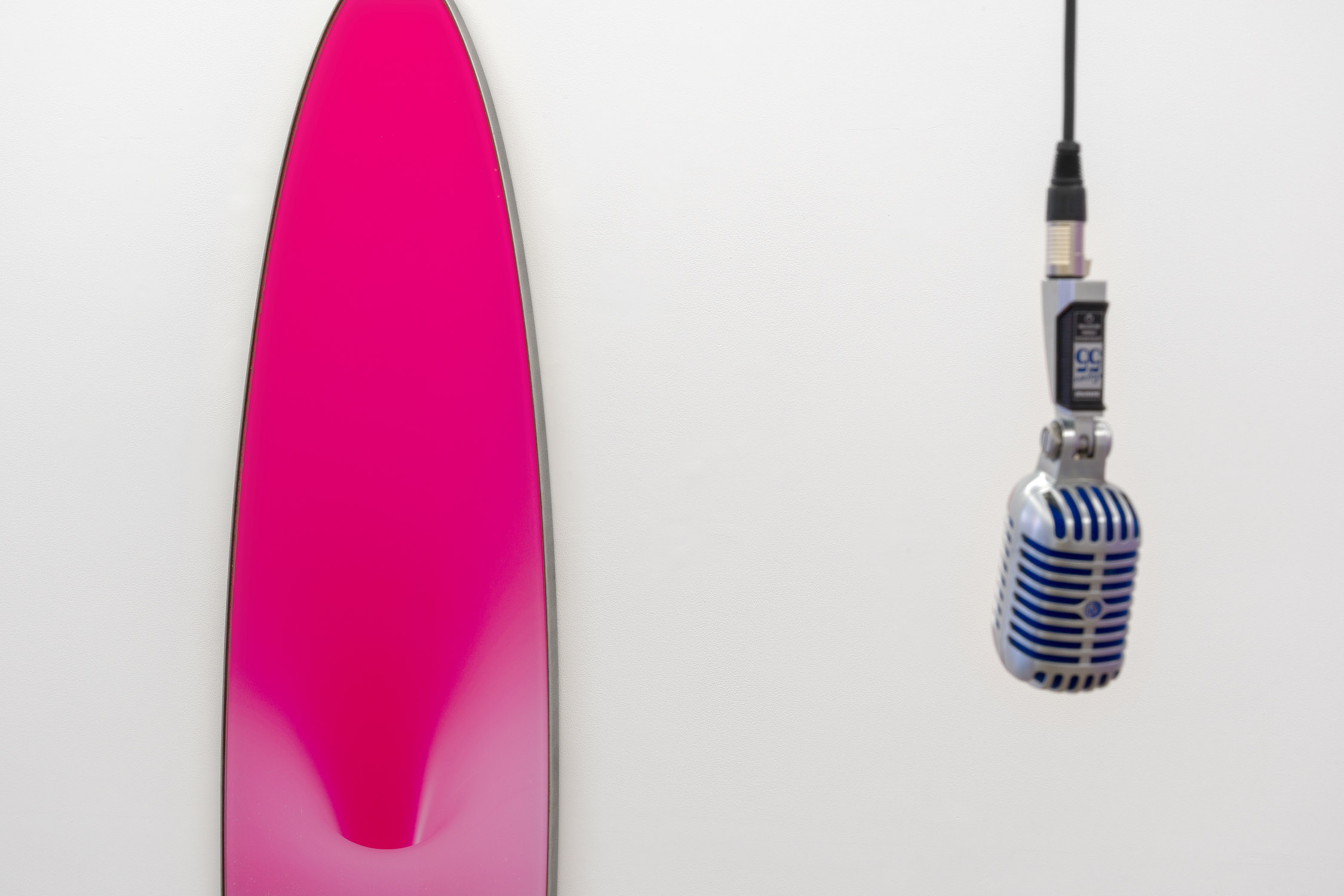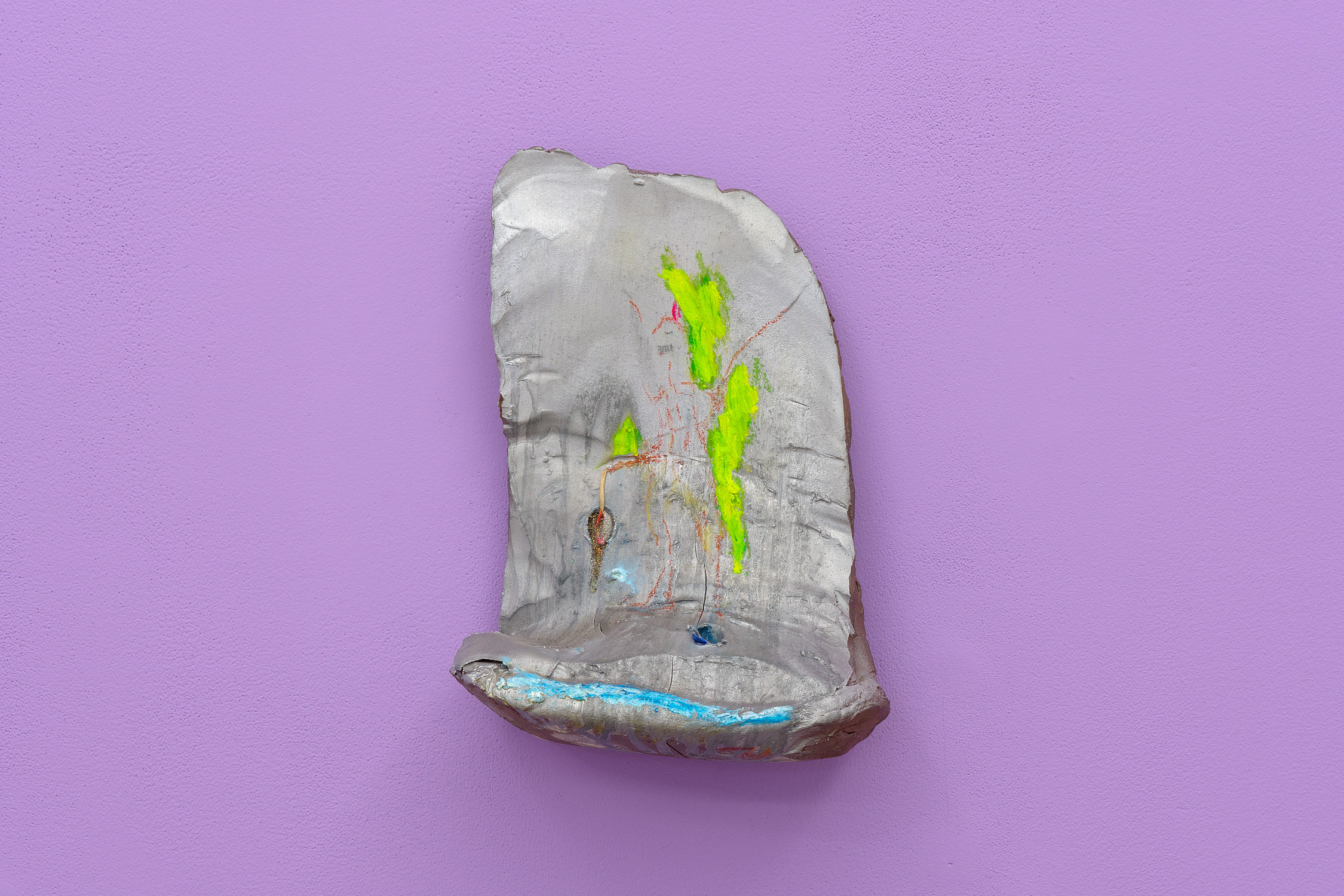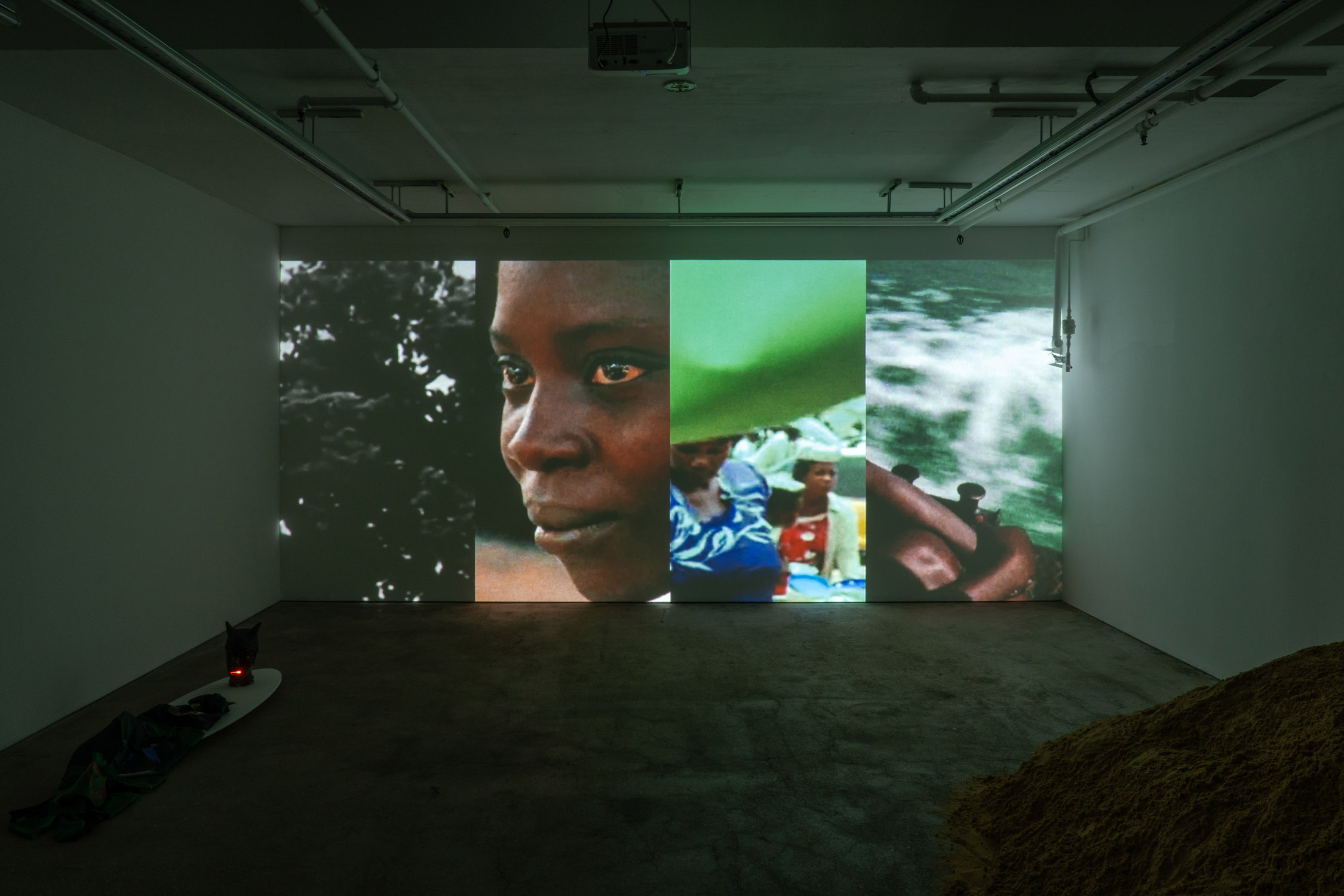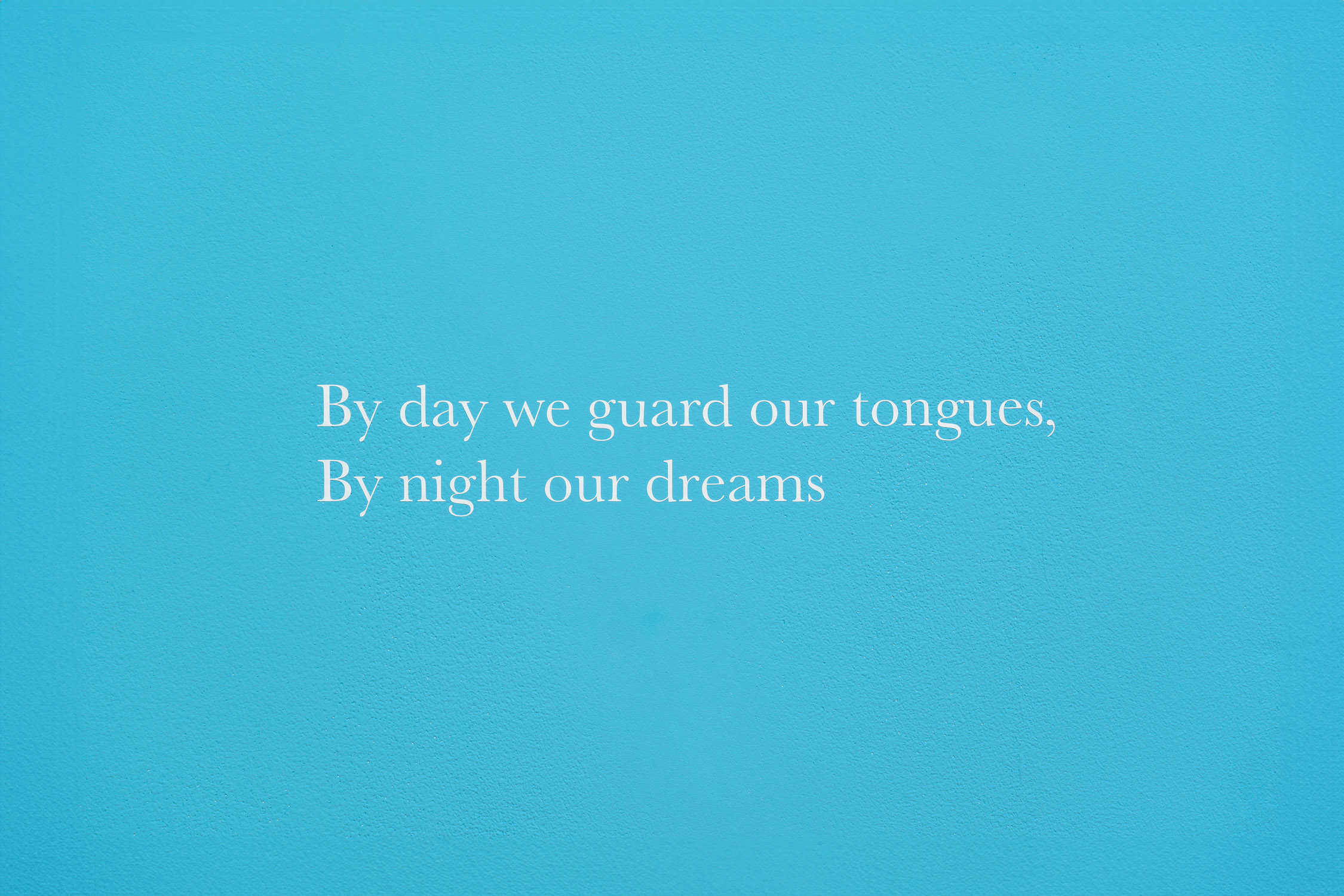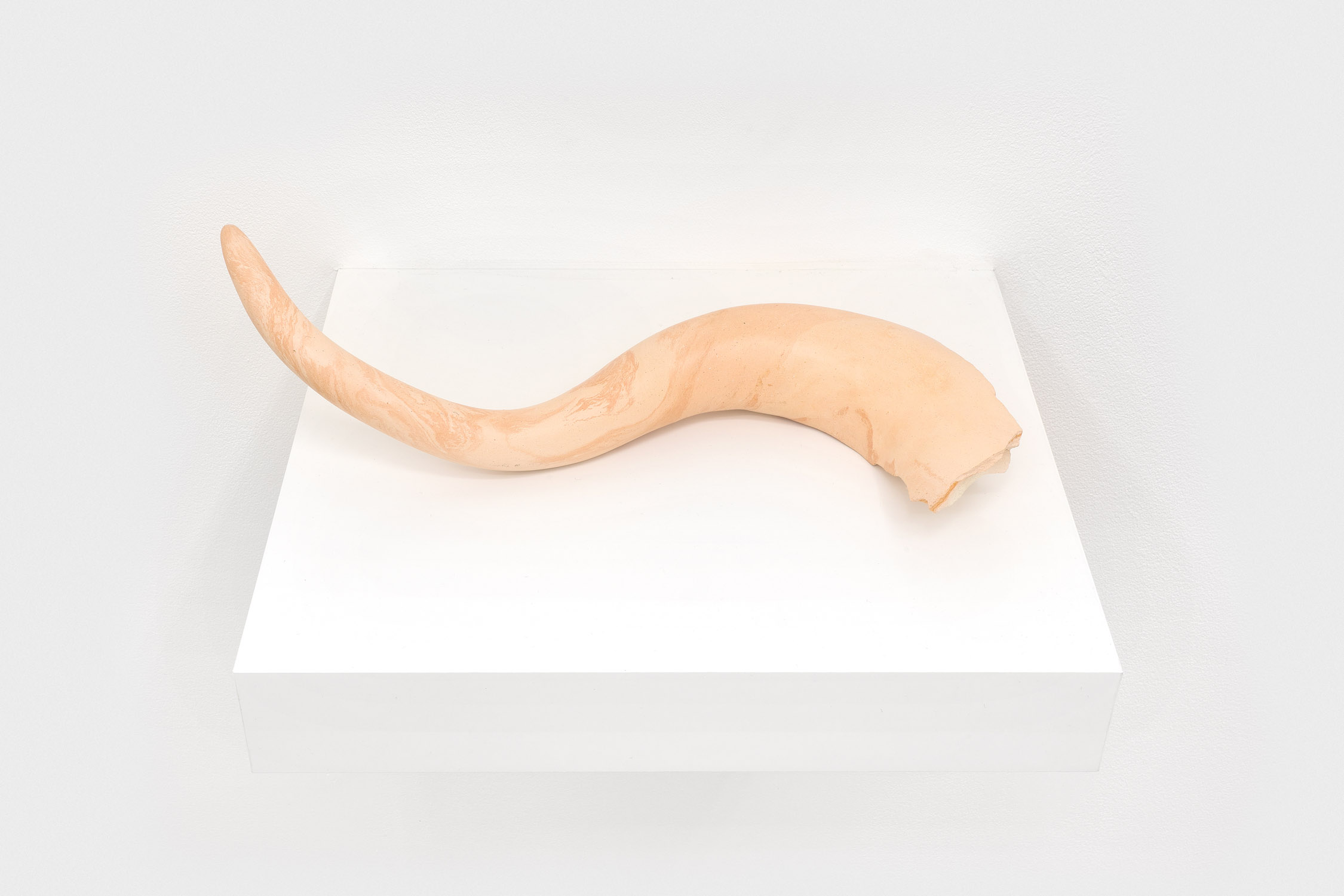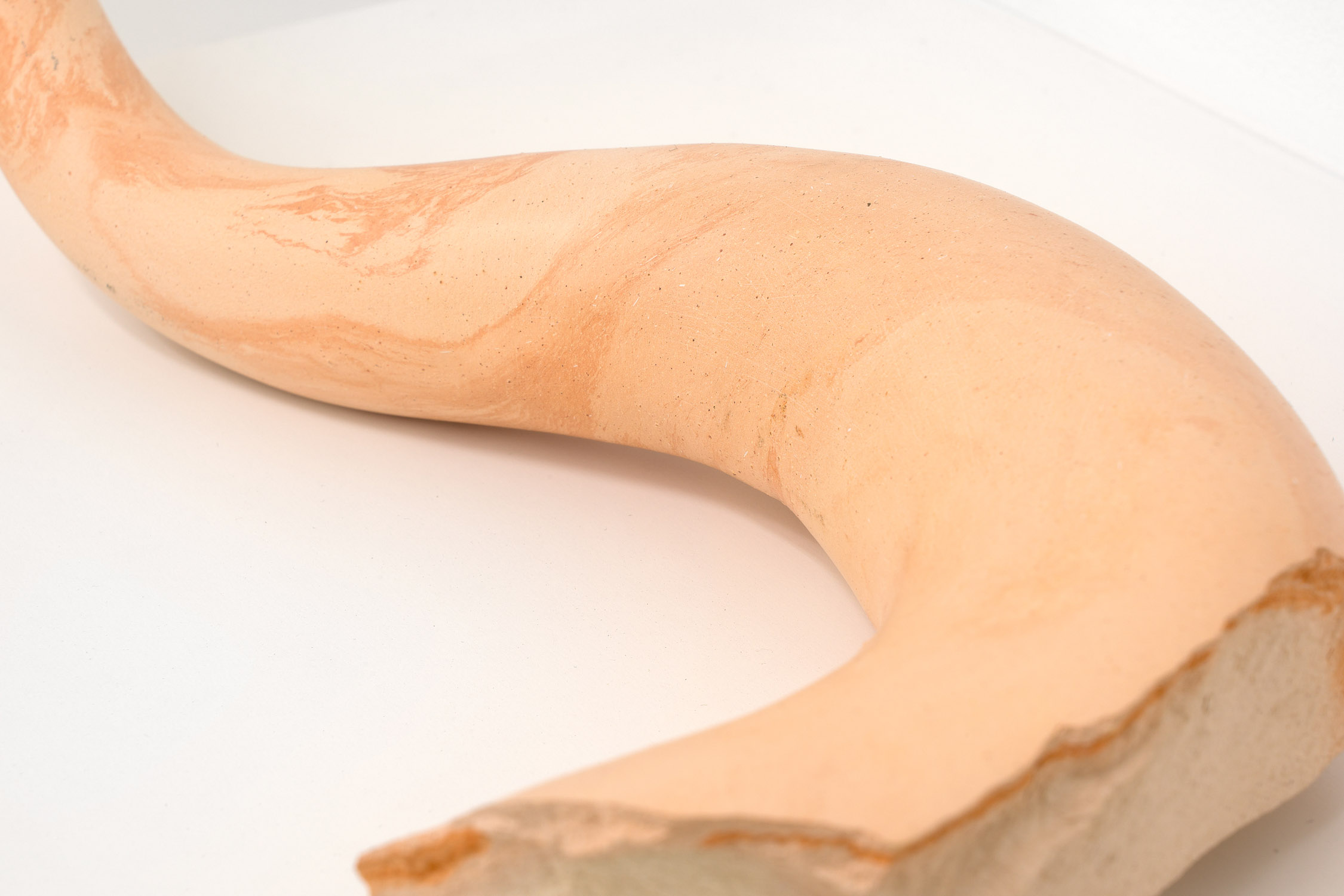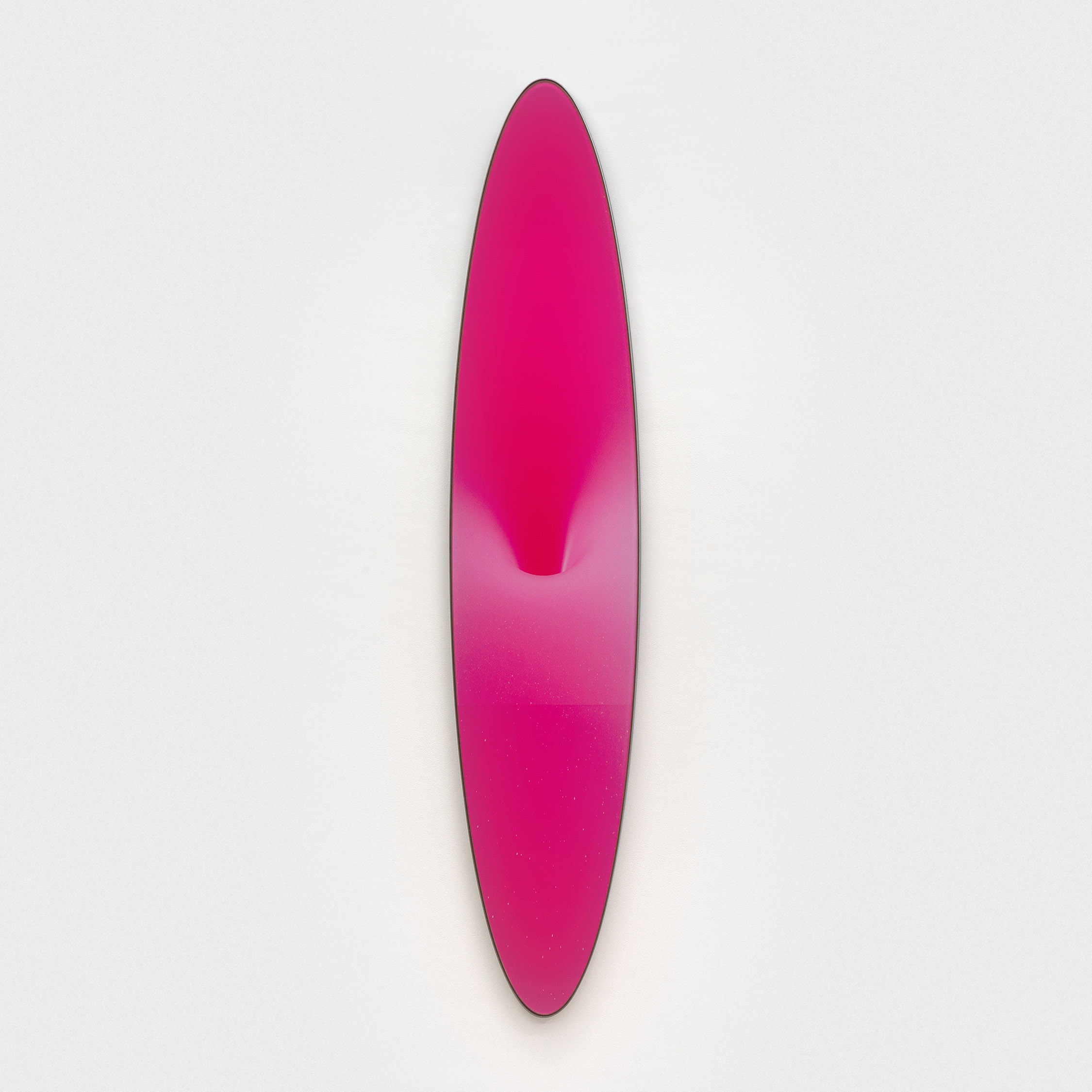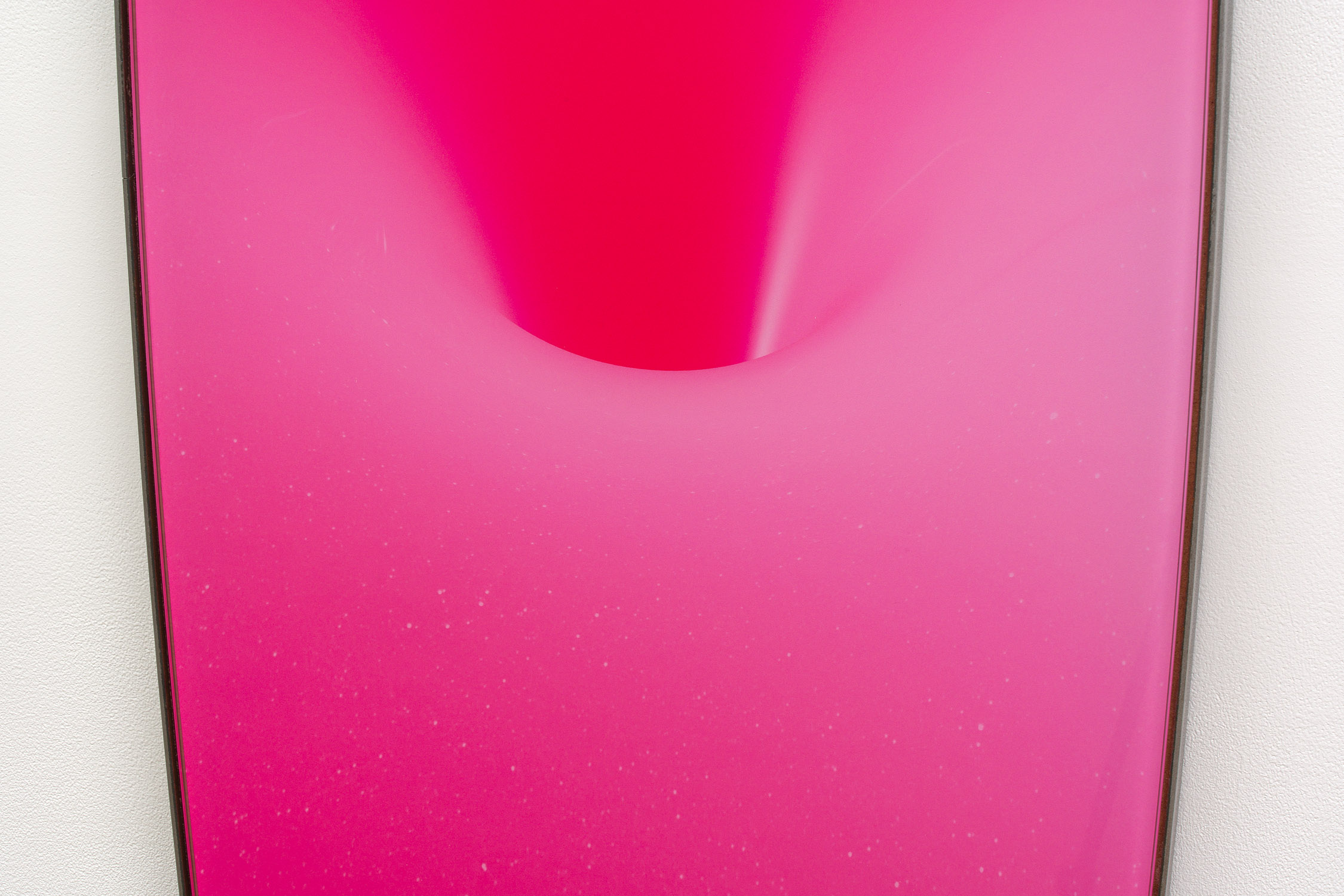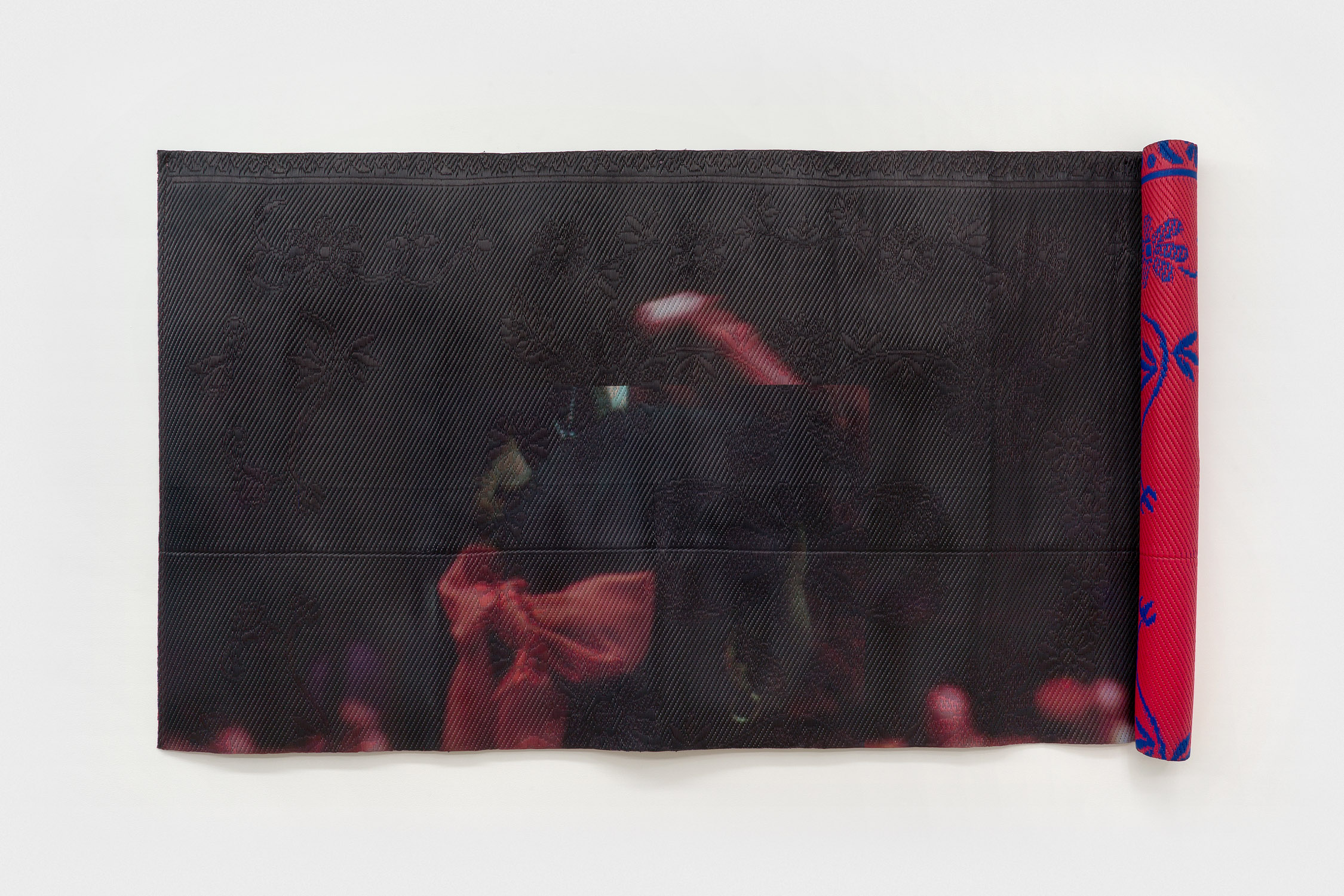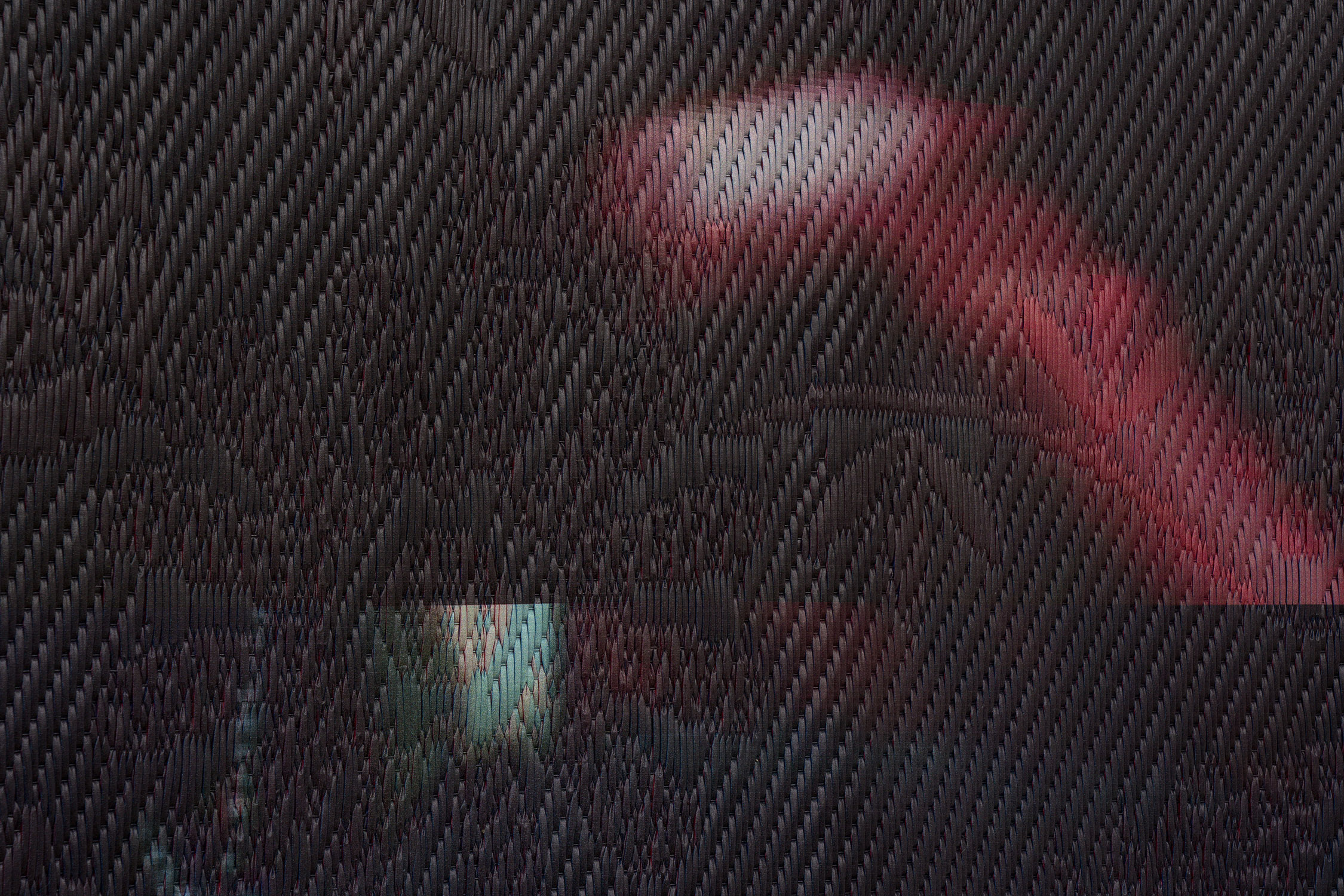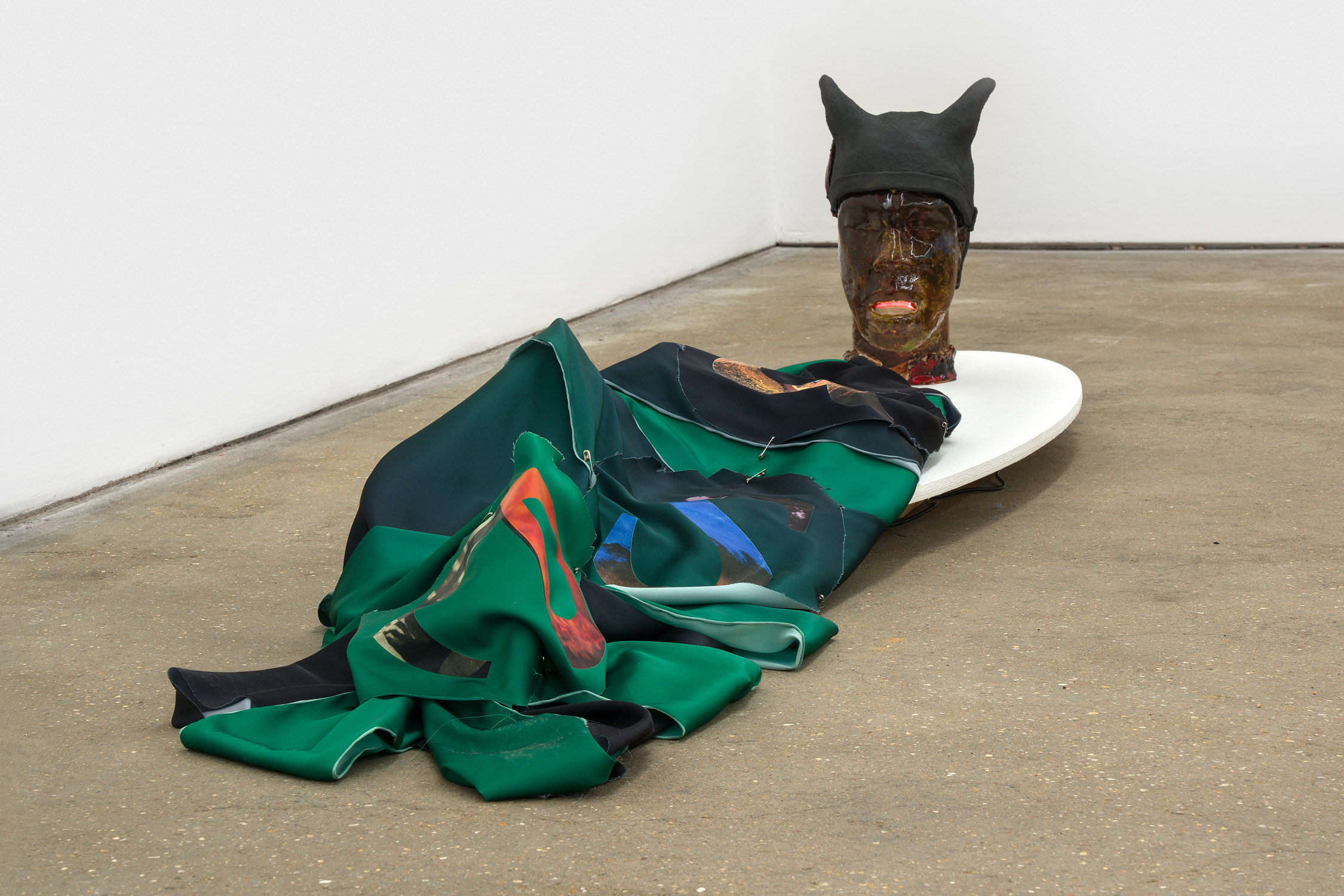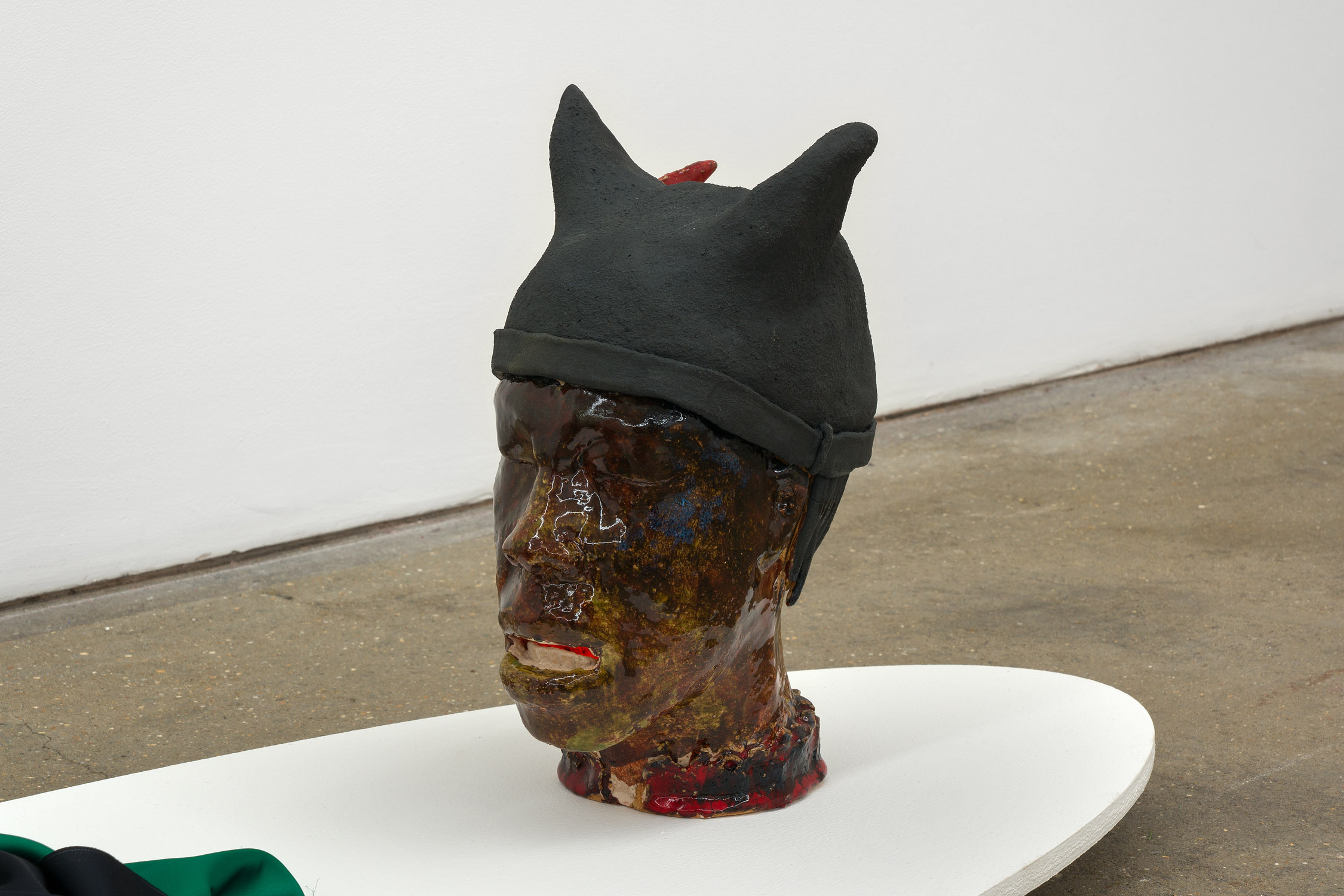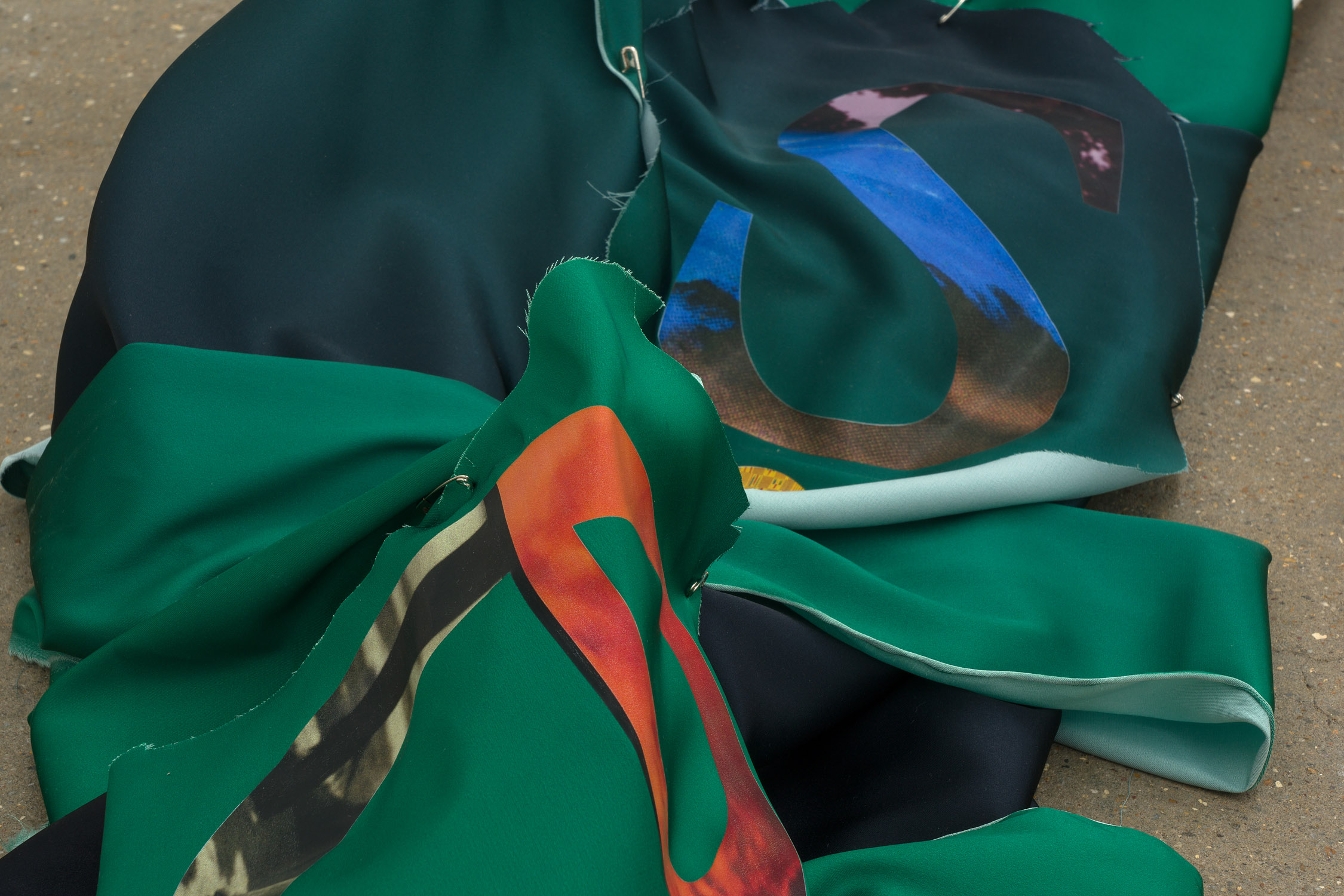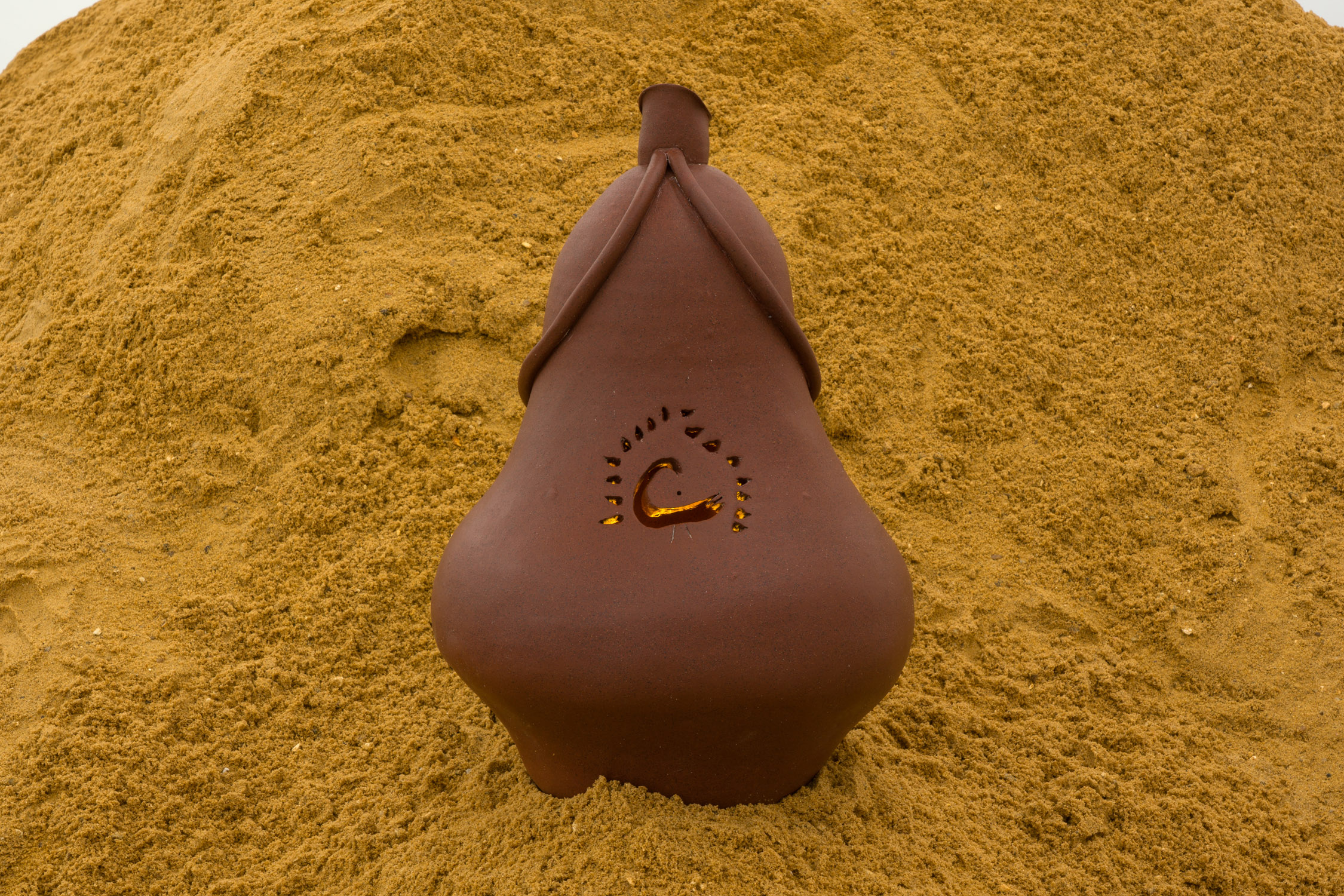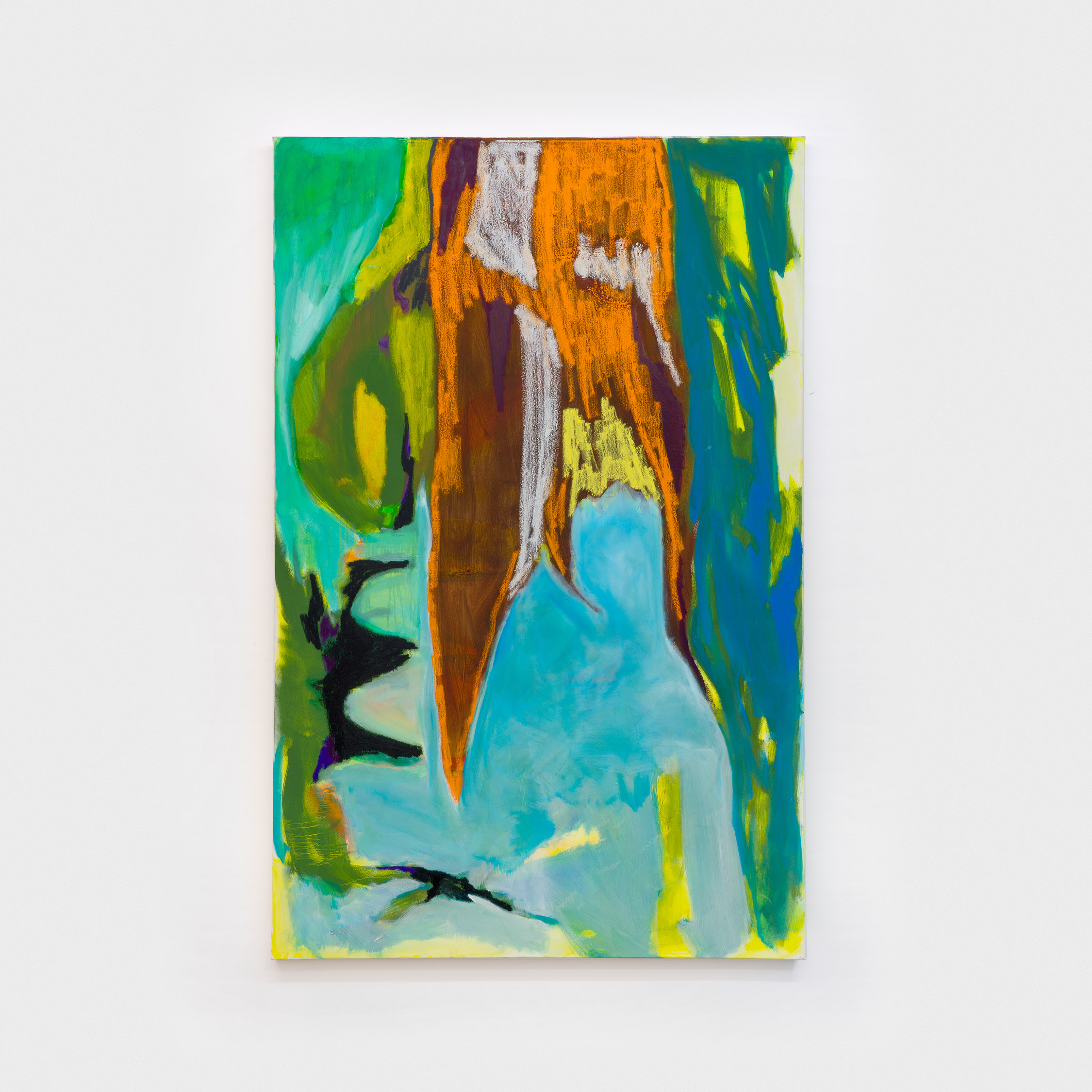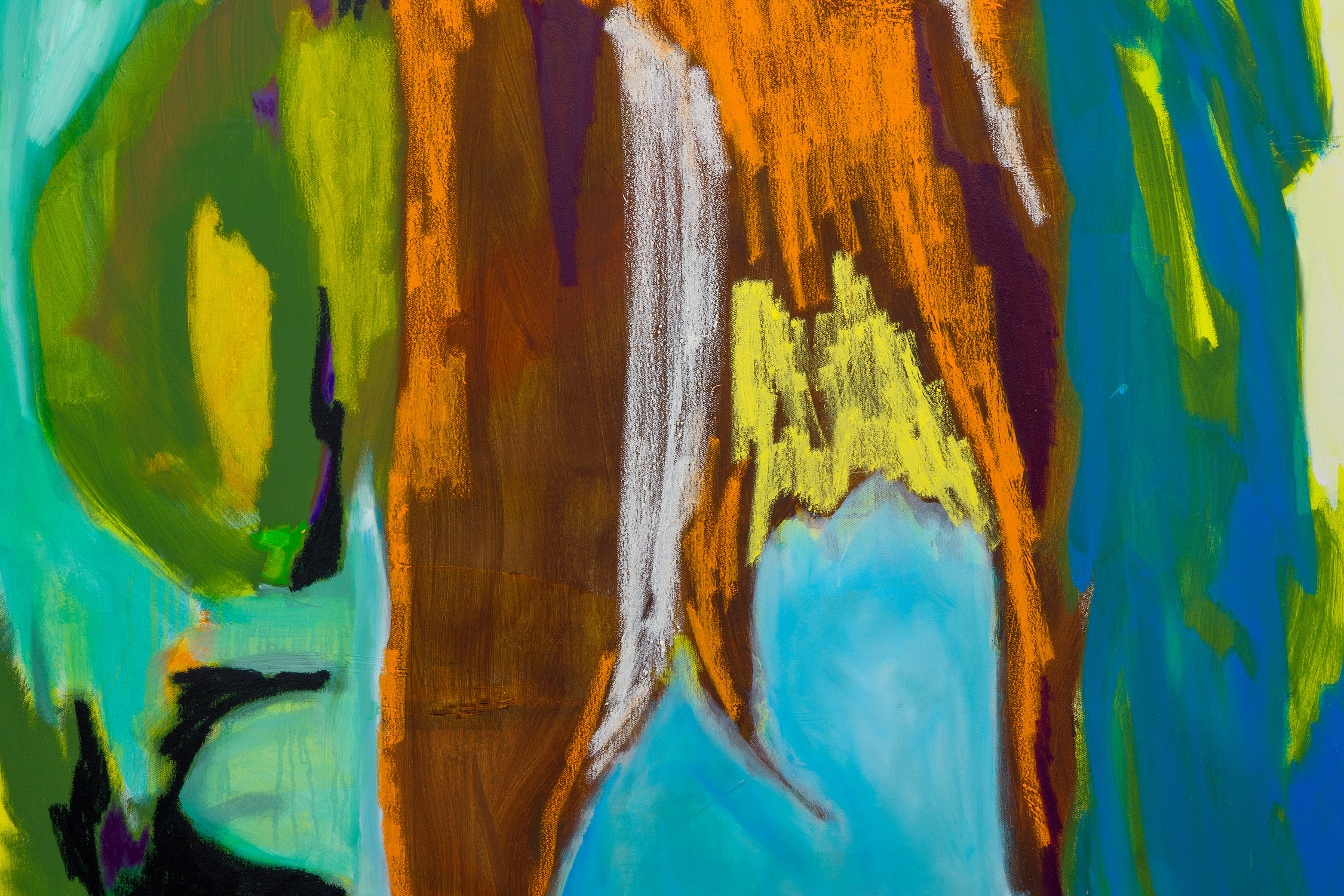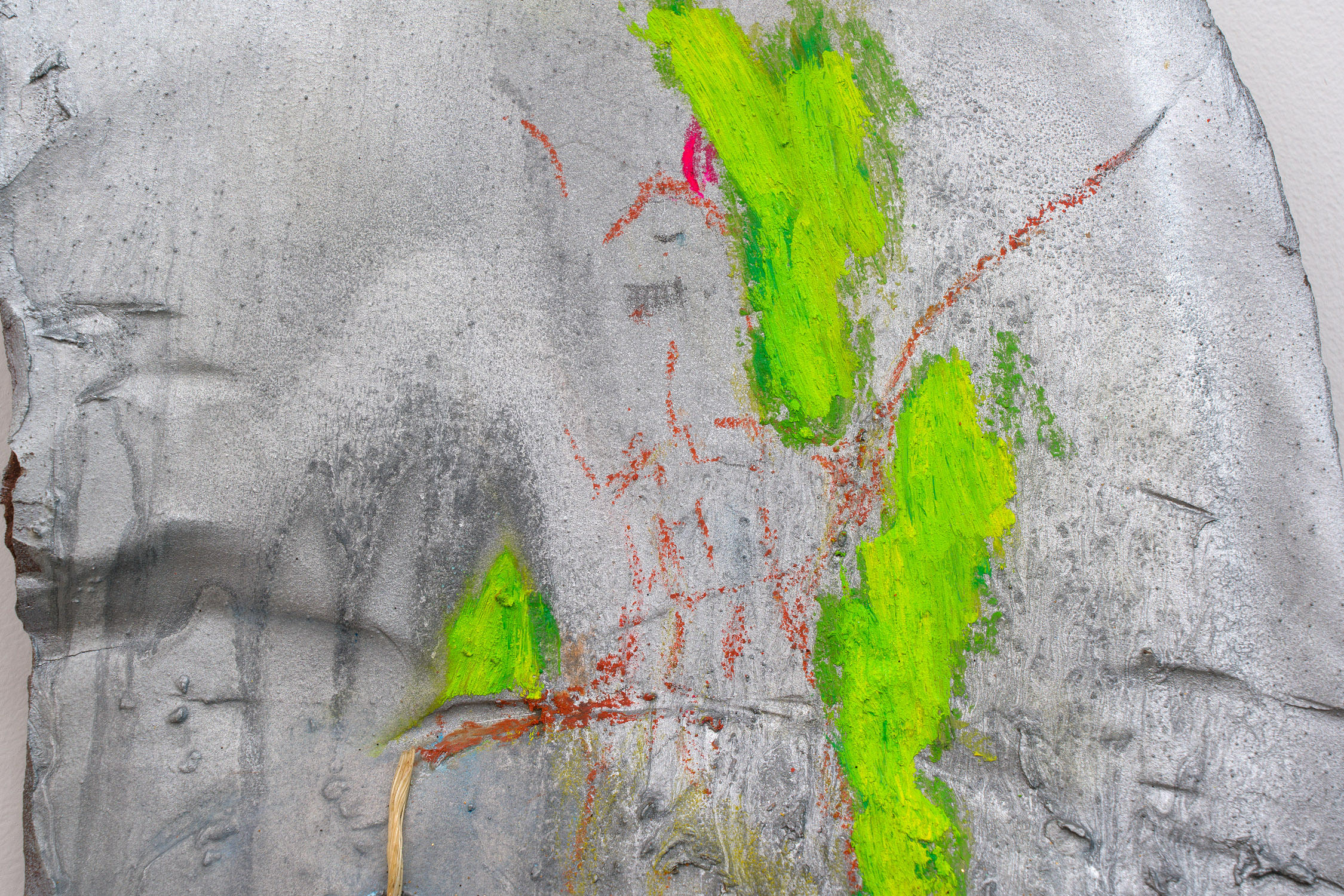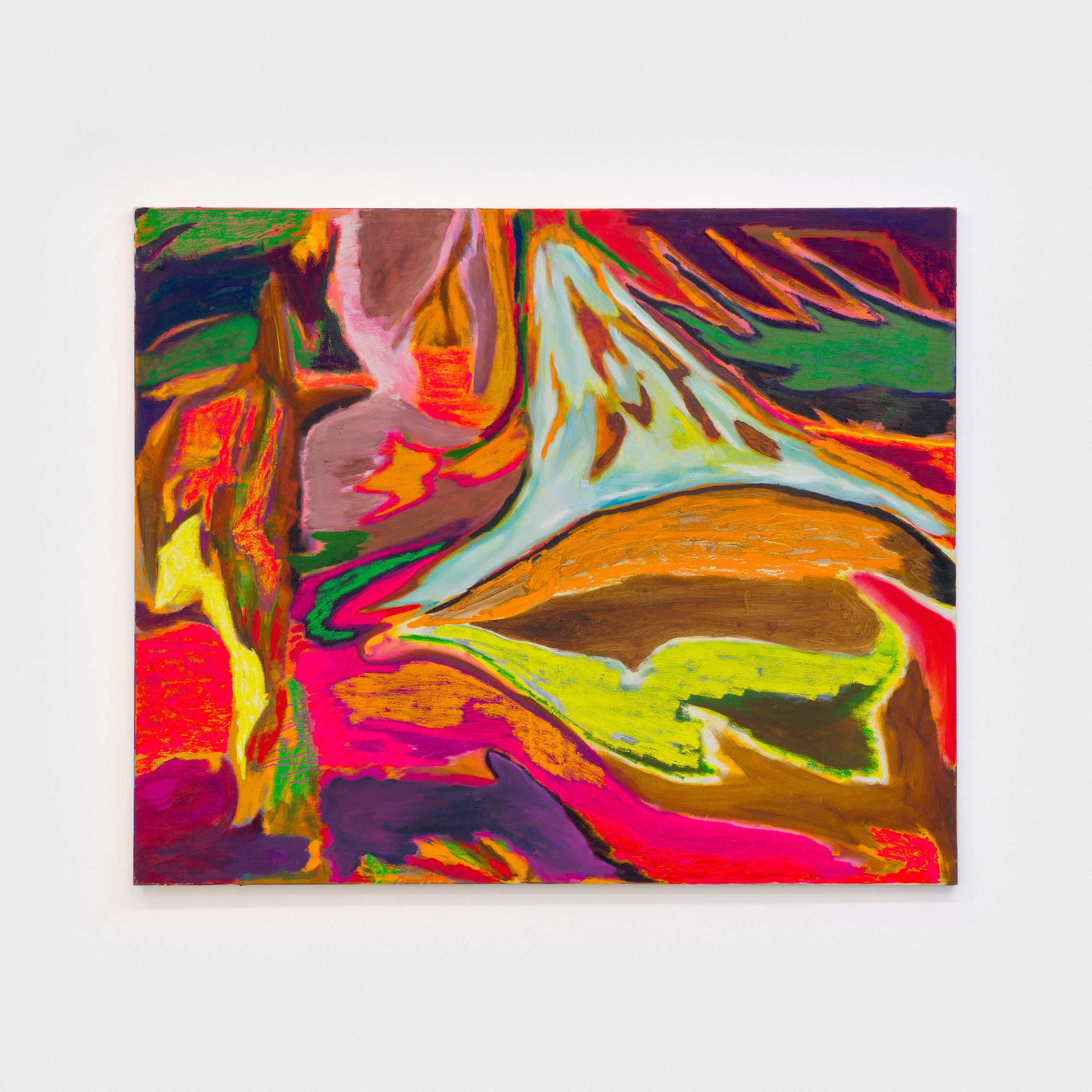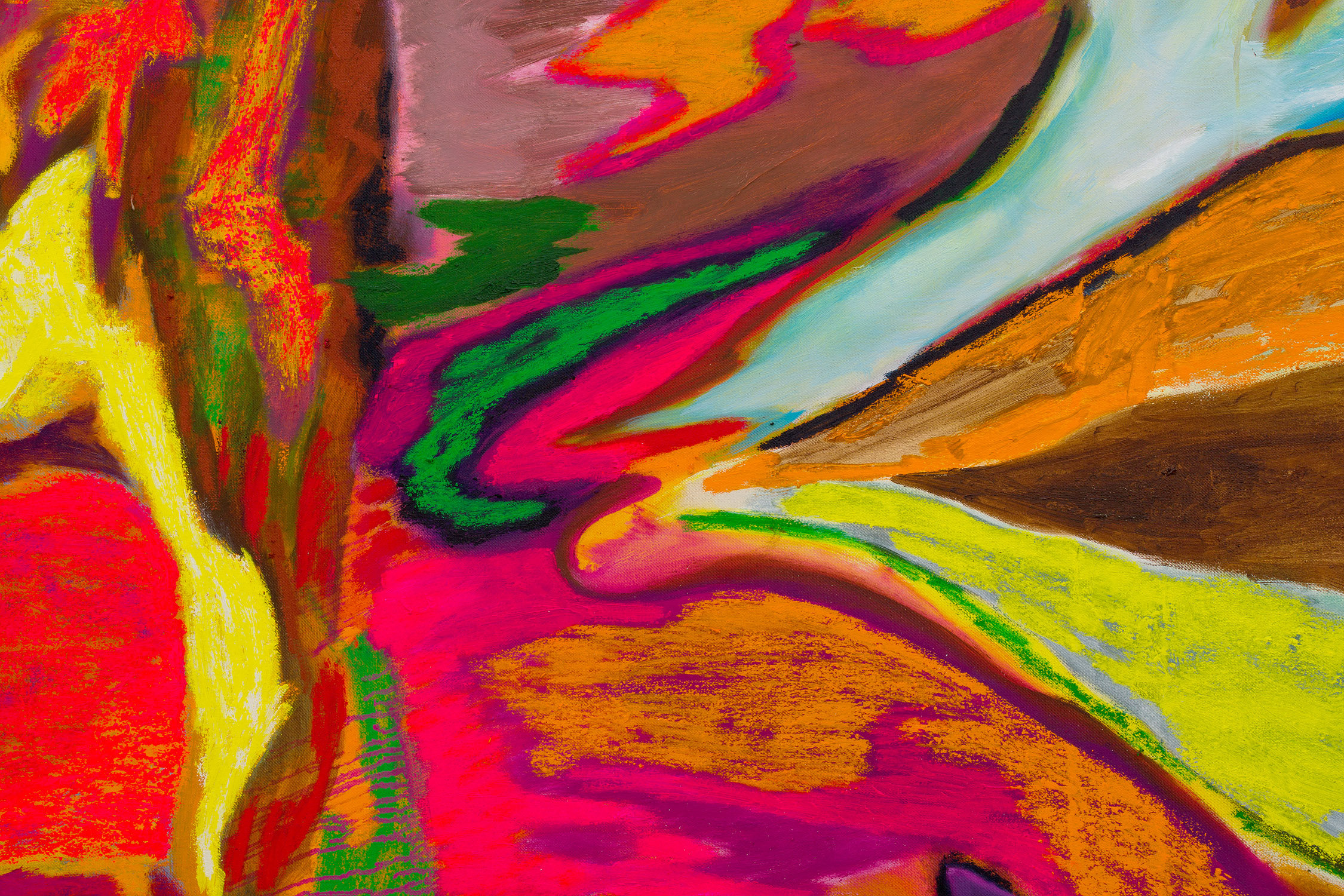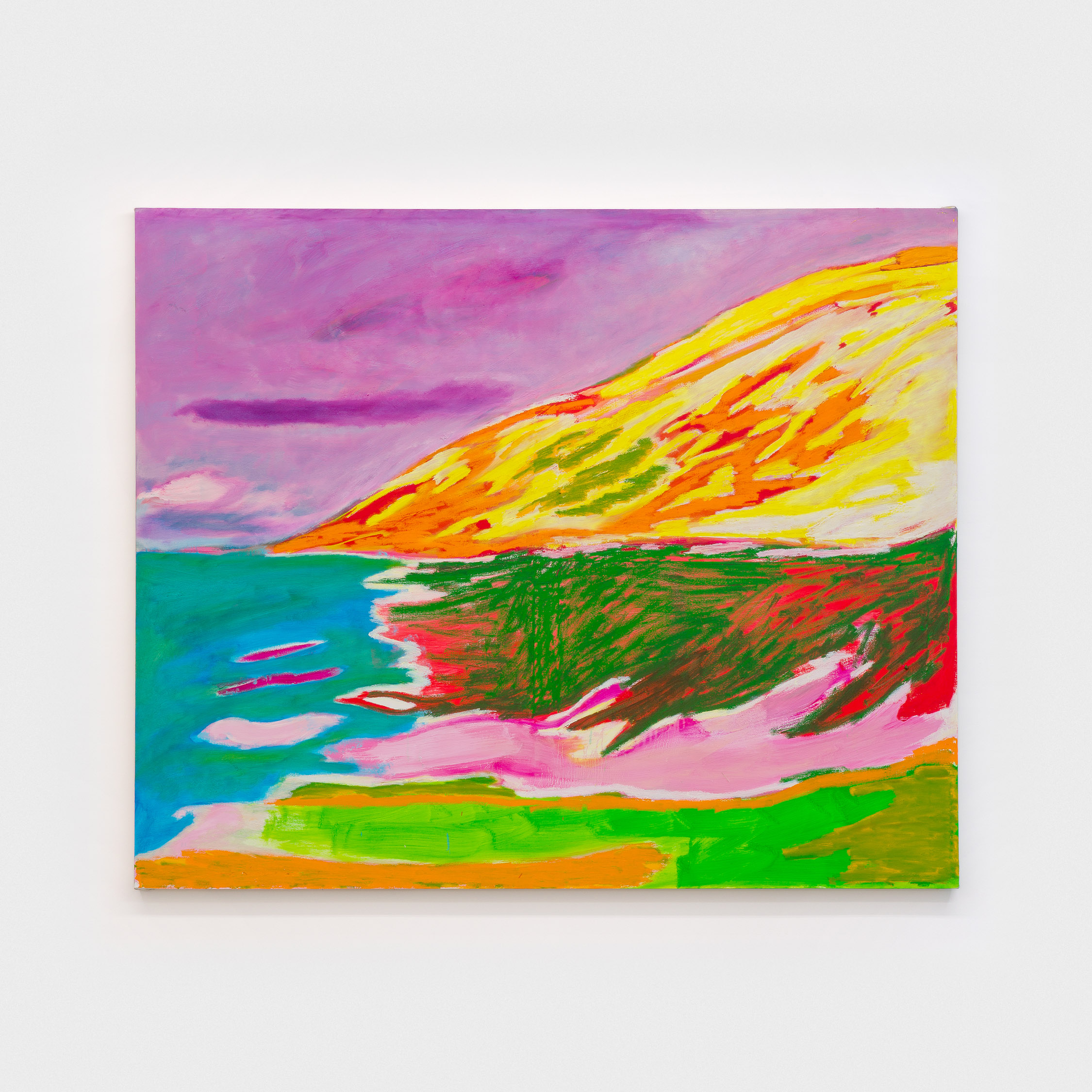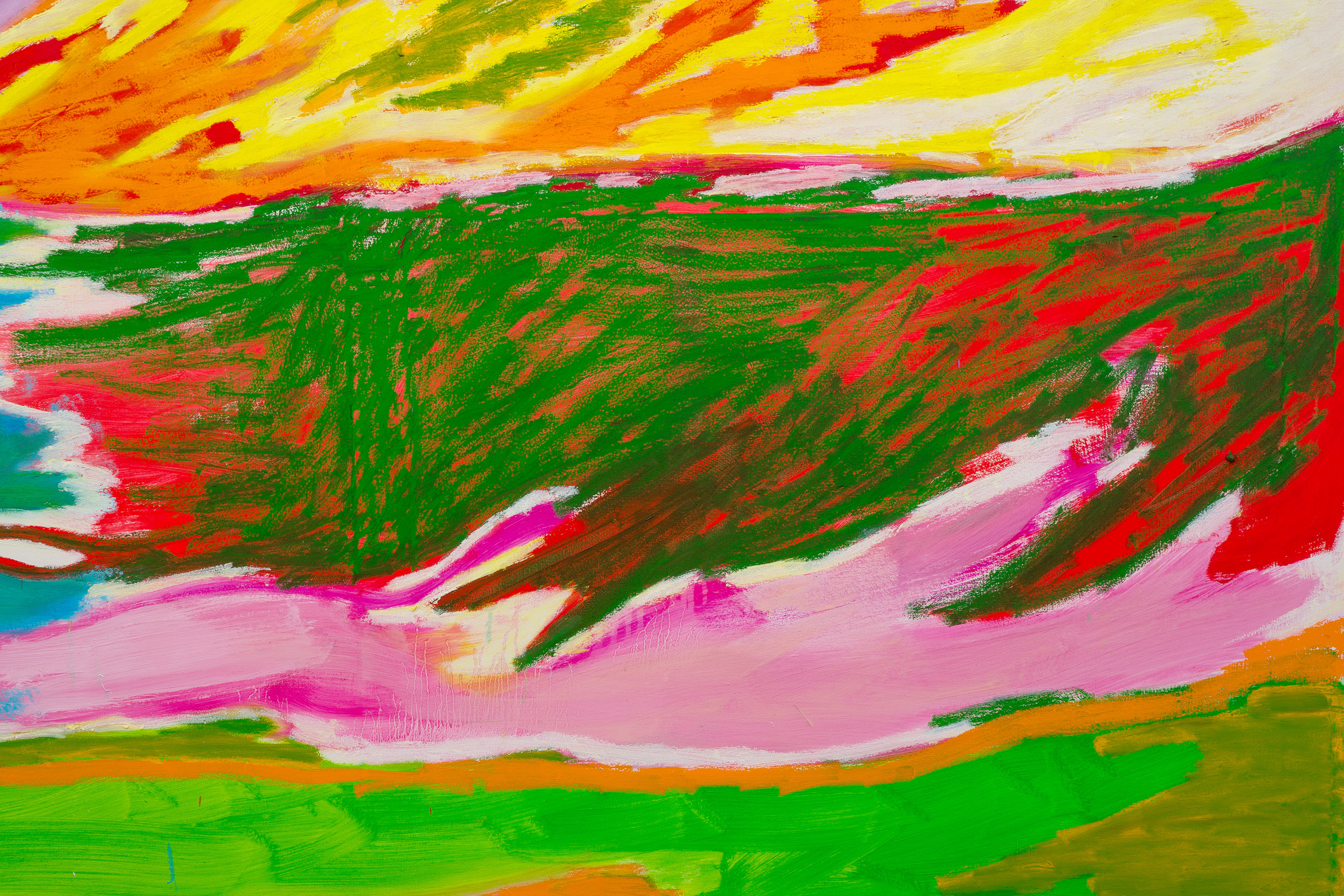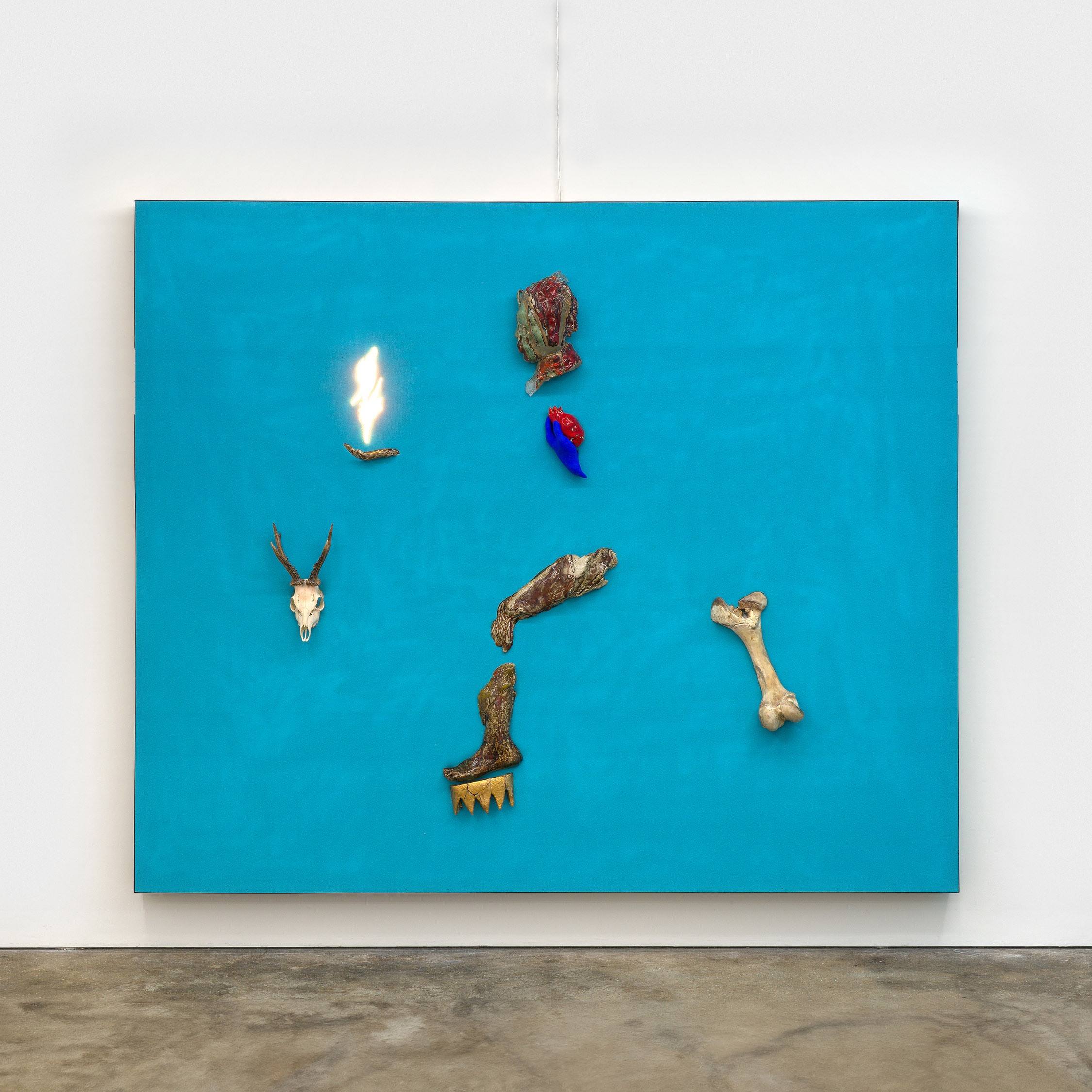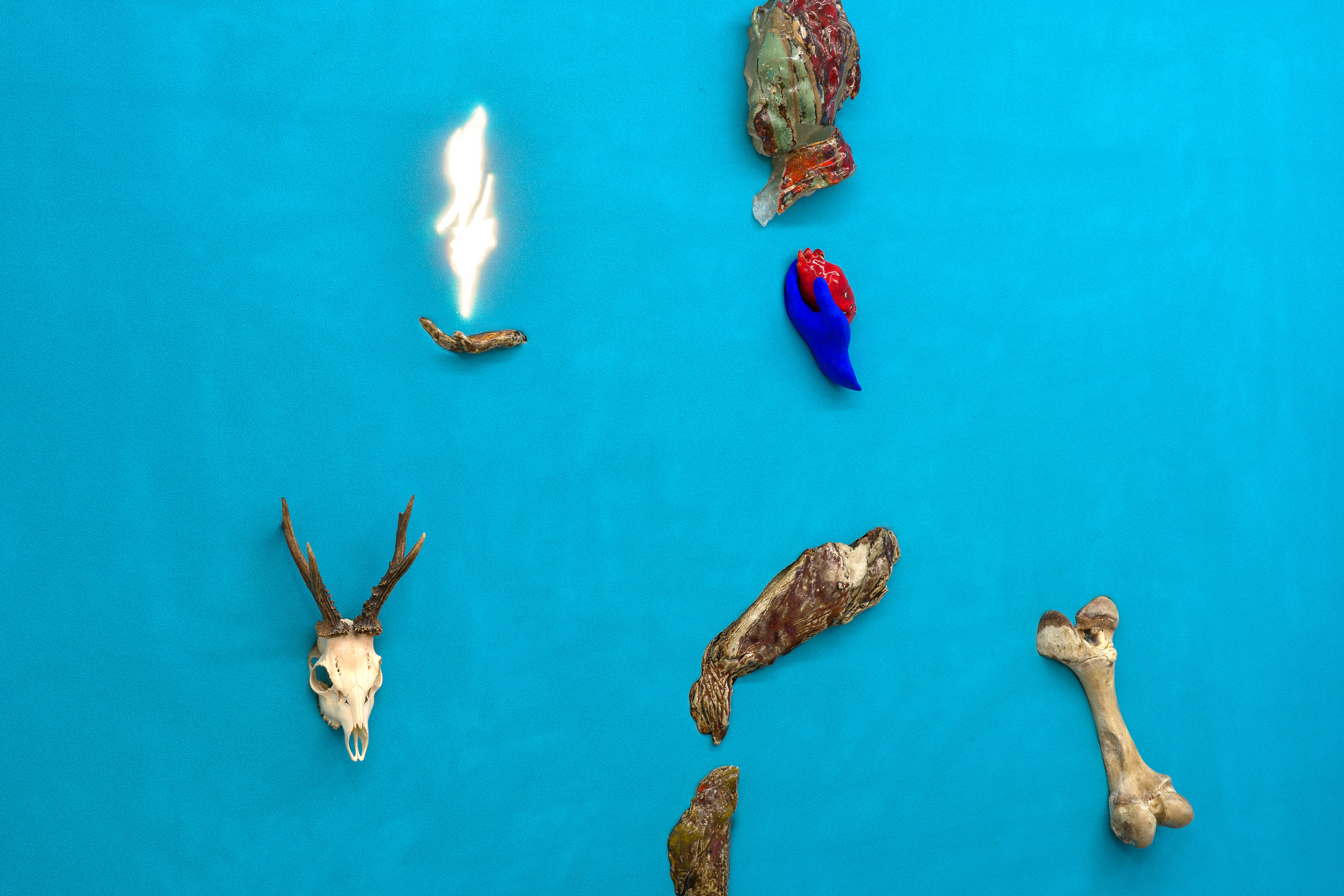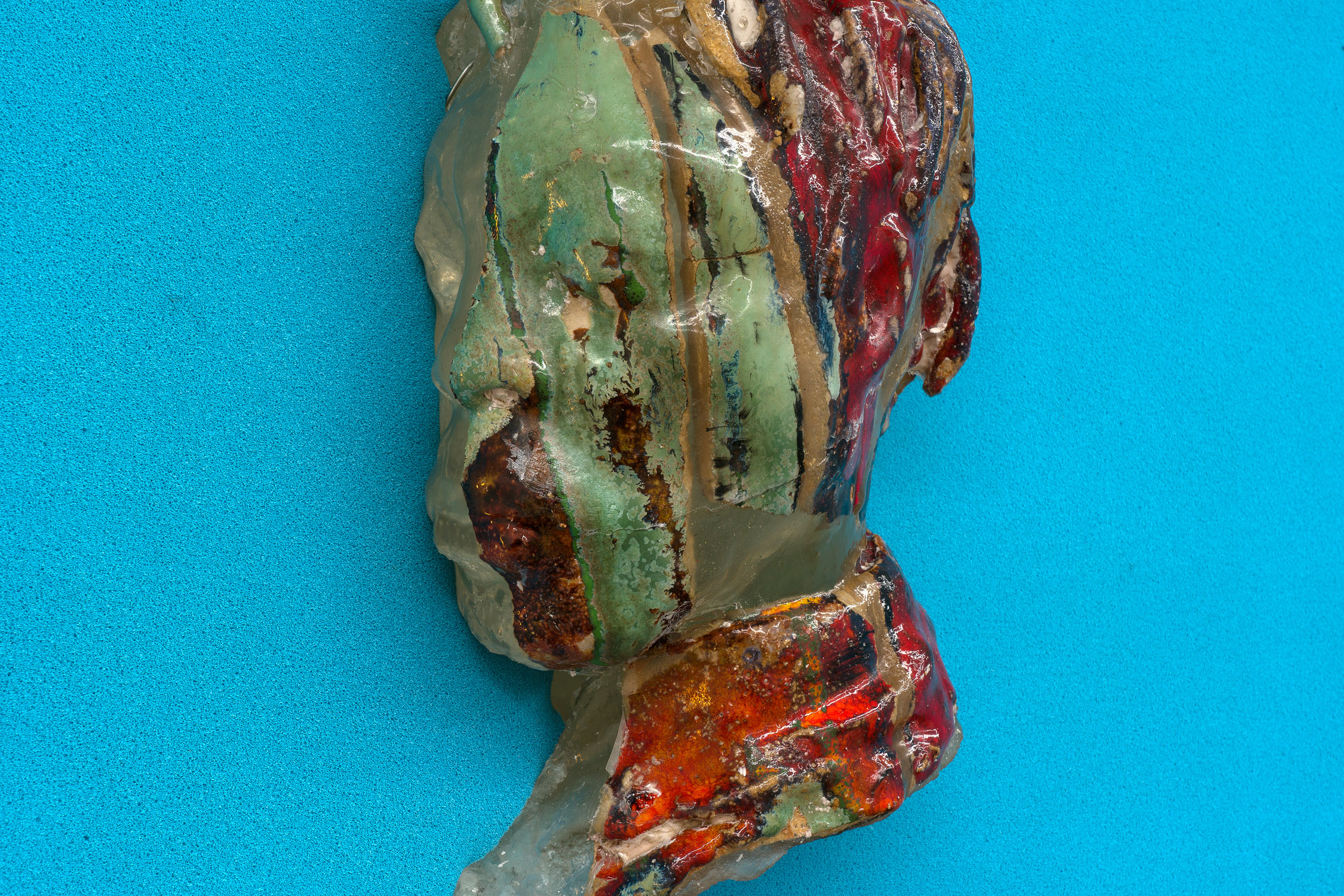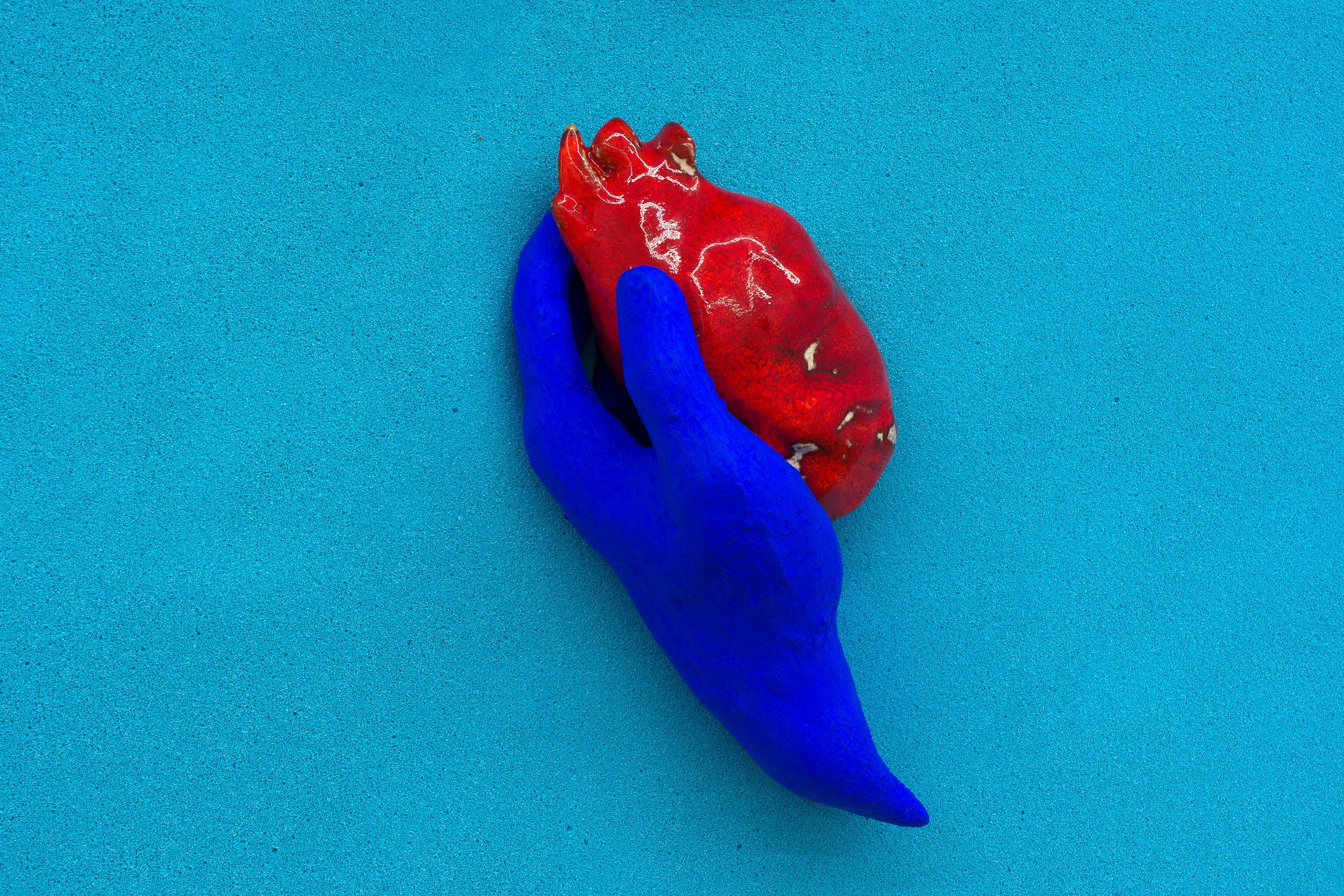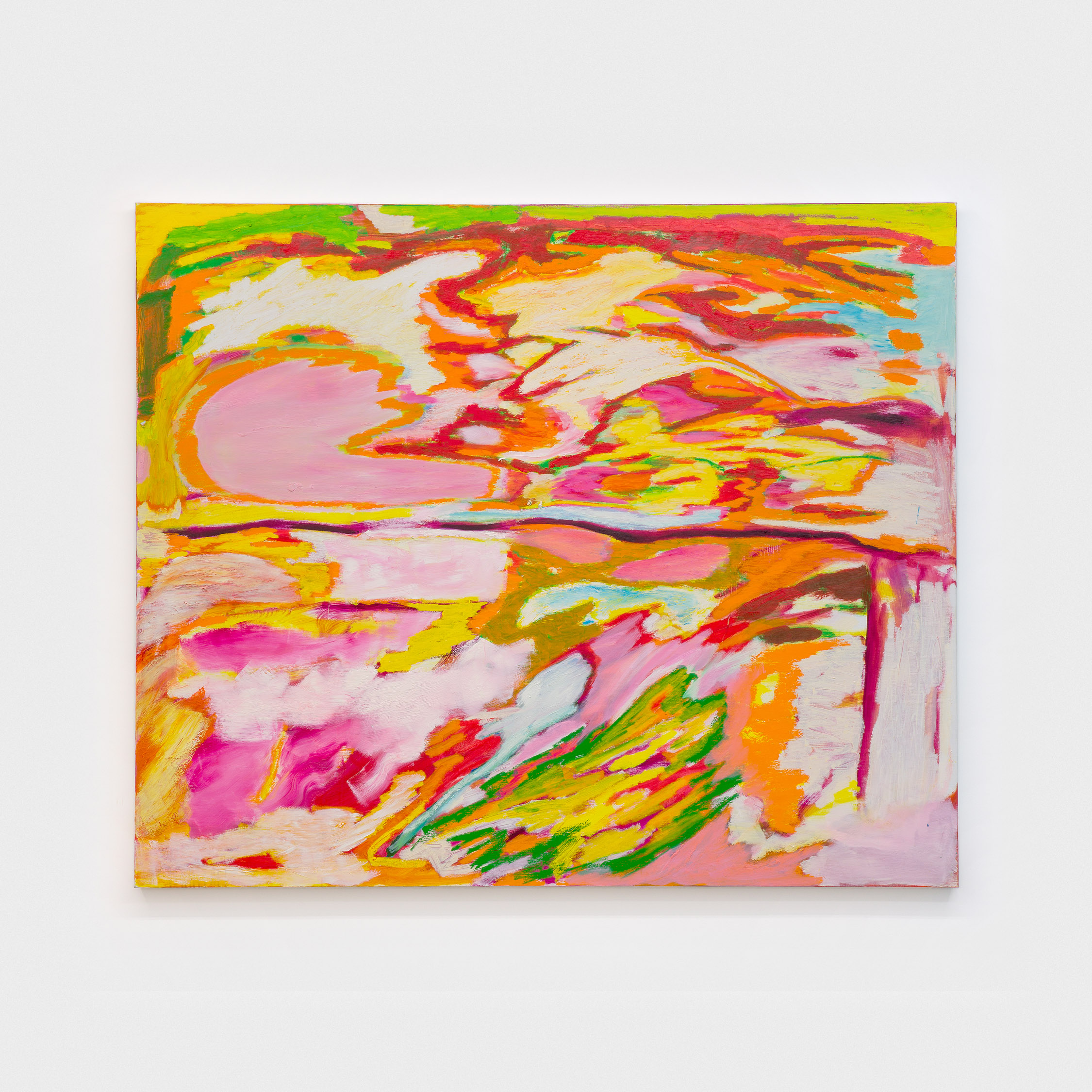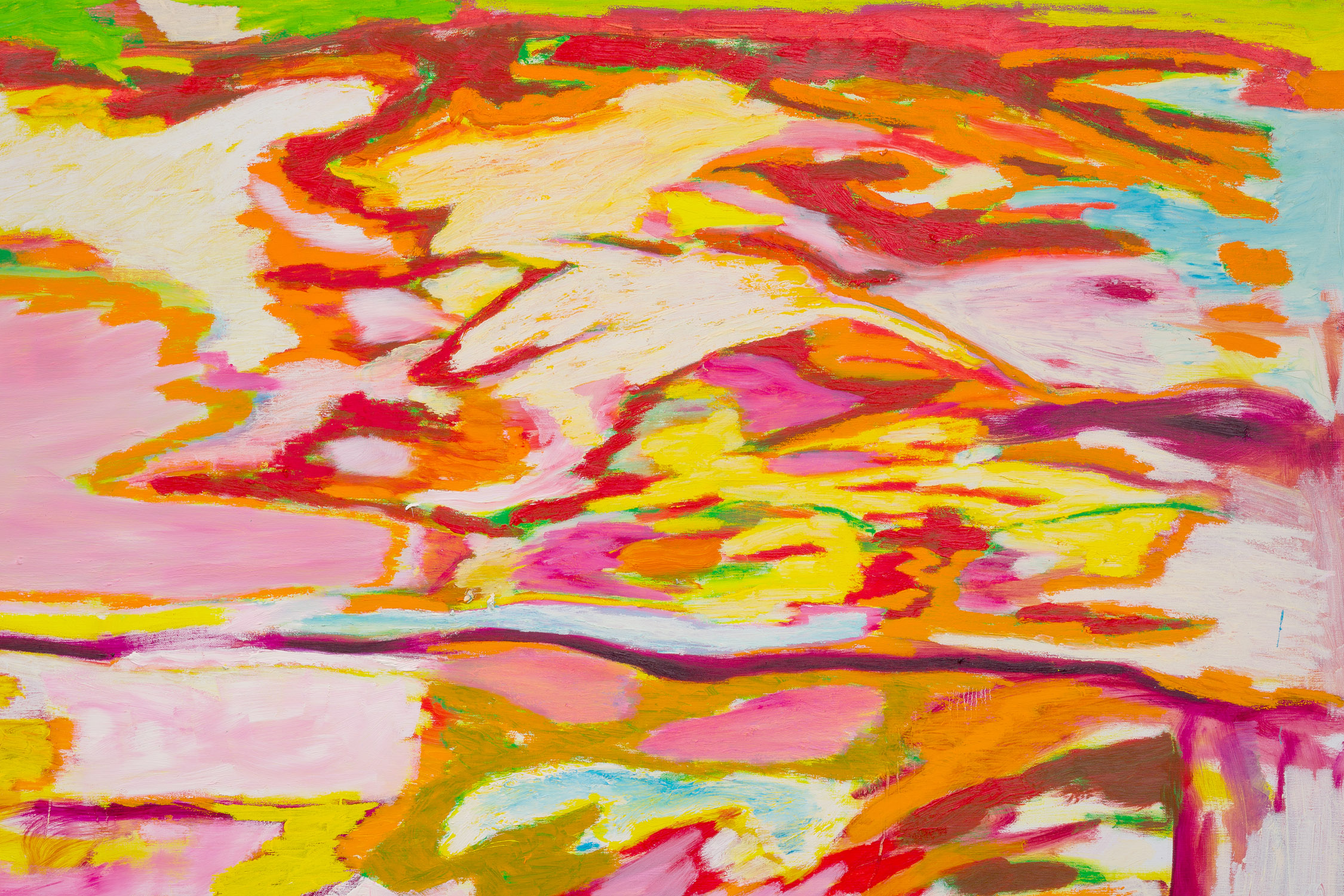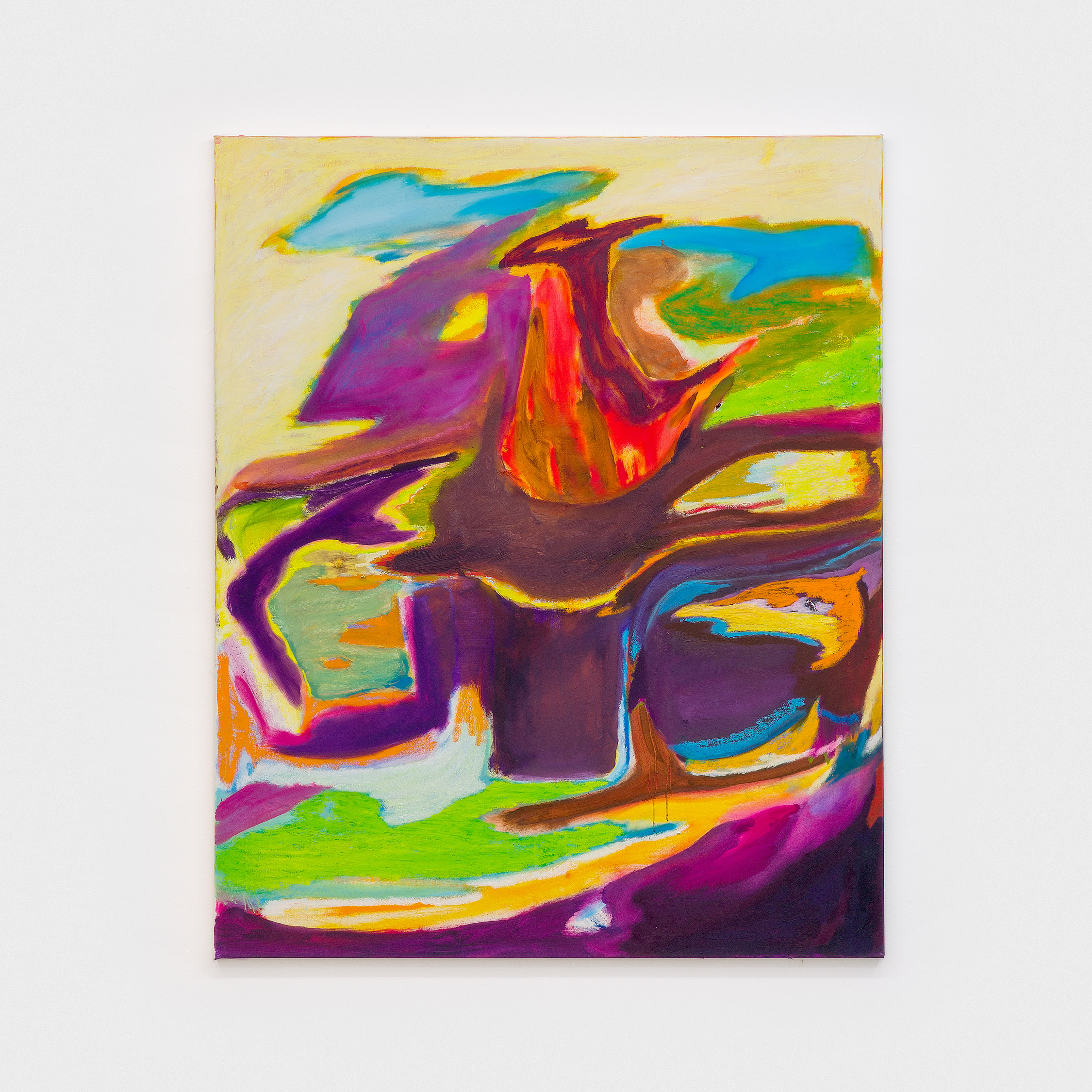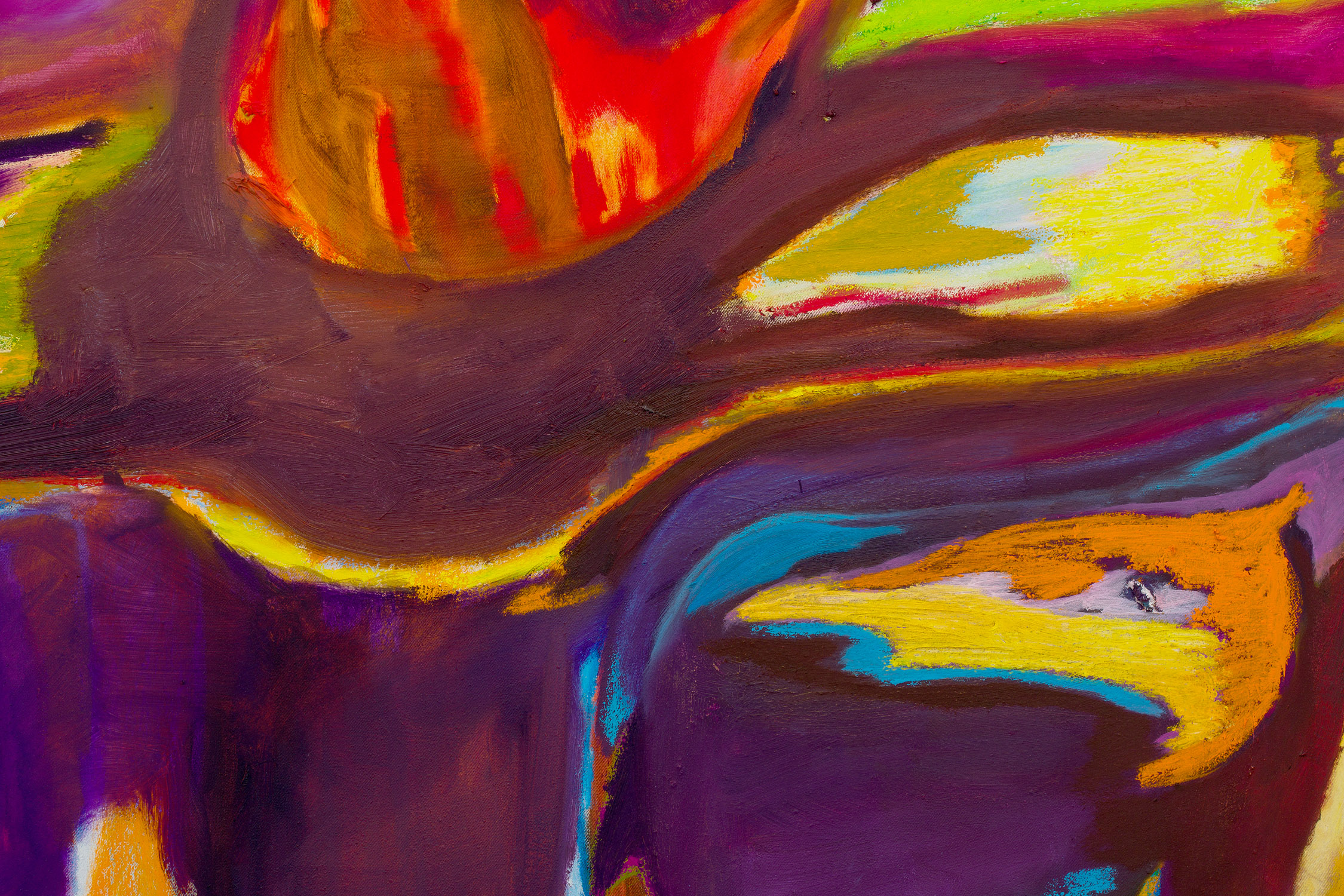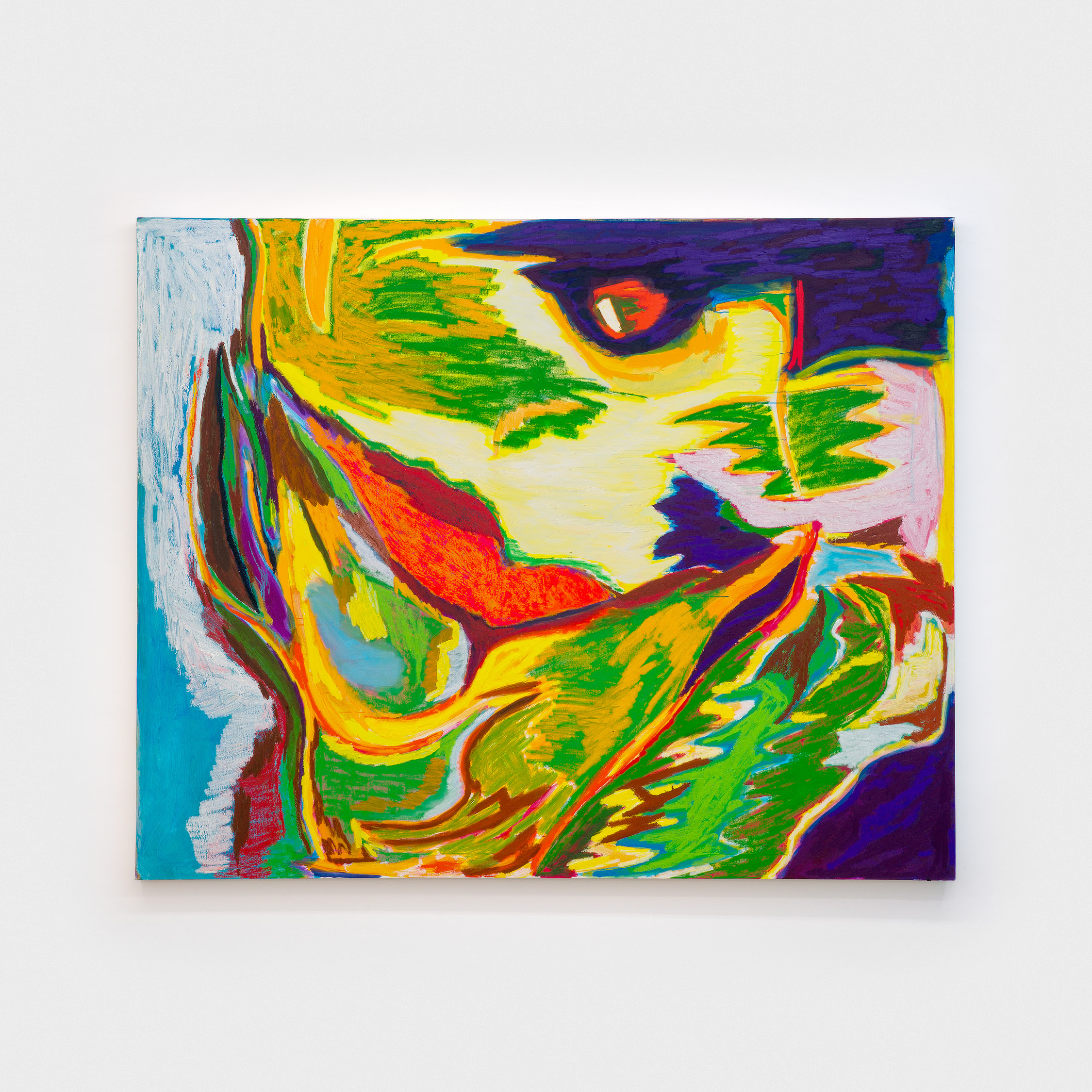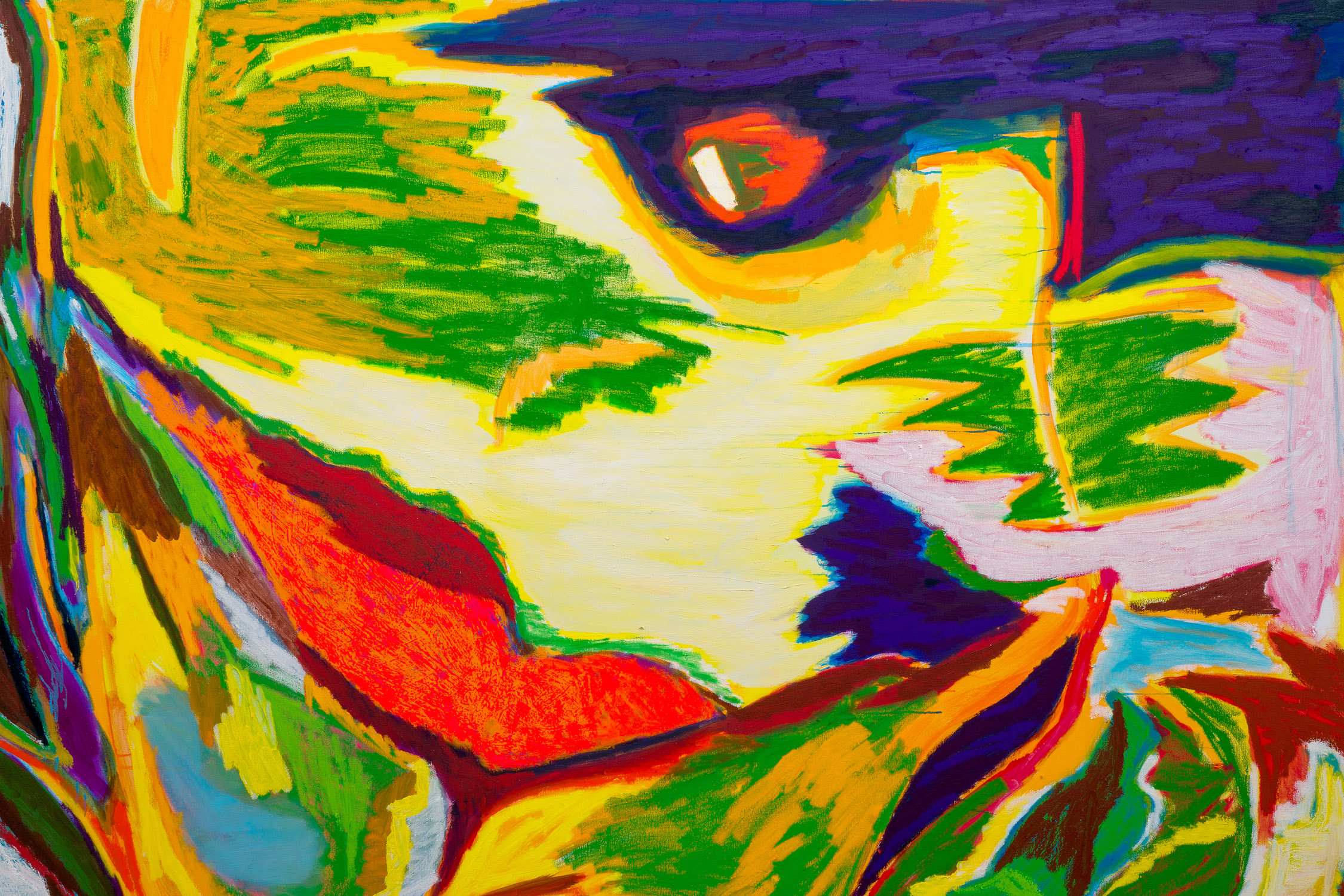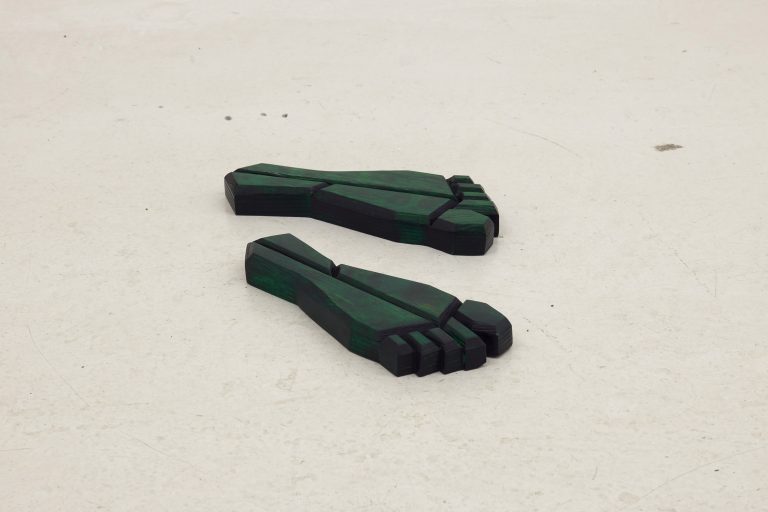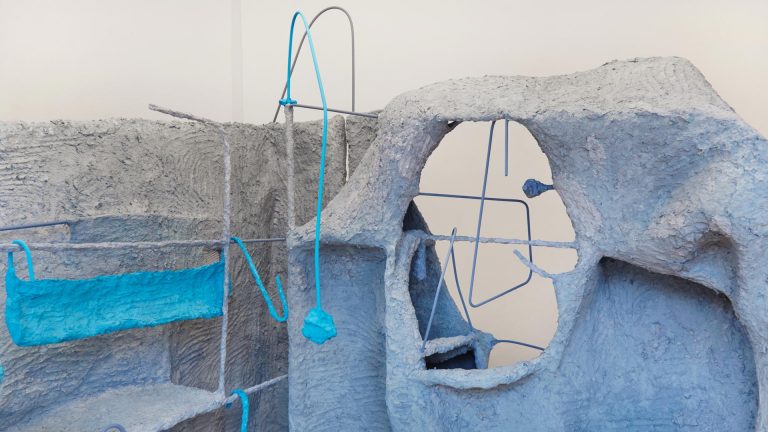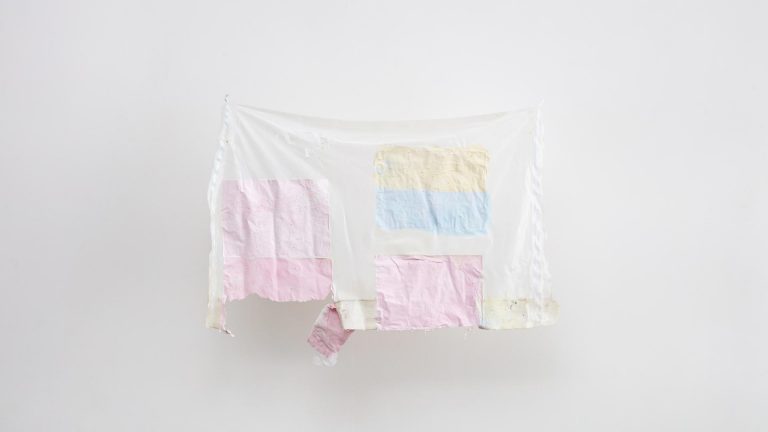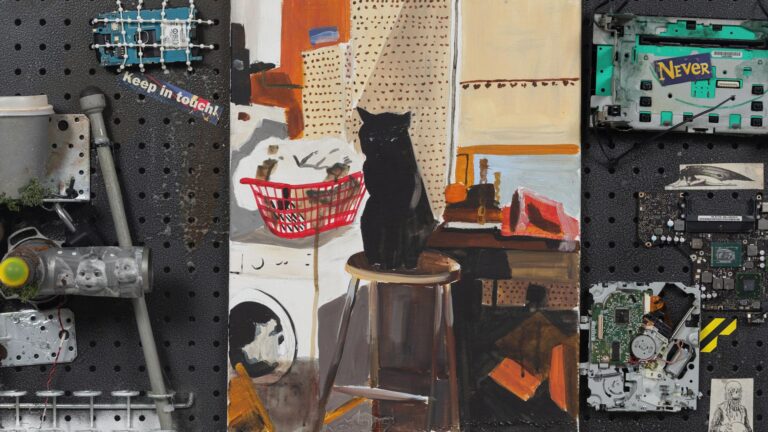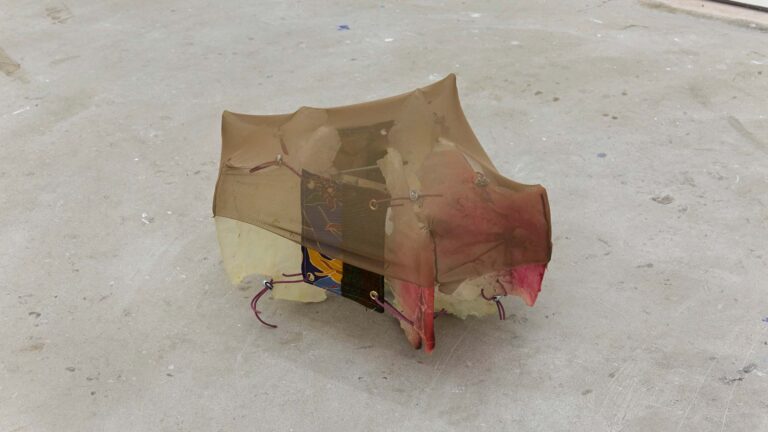Public Gallery is pleased to present SPIT, a duo exhibition of painting, sculpture, sound and film by London-based artists Emmanuel Awuni and Divine Southgate-Smith. Conceived together over a year-long research driven collaboration, SPIT explores the untethered rhythms of abstraction, architecture, poetry and song.
As collectors, archivists, composers and artists, Awuni and Southgate-Smith explore diasporic creative expression, sharing in a mutual capacity to guide others towards deeper metaphysical understandings. Their practices converge in celebration of Rhythm, described by philosopher and poet Léopold Senghor as an ordering force that constitutes the essence of African expression. Calling on and responding to objects interned within museum collections, Awuni and Southgate-Smith understand ethnographic materials as not limited to the legitimacy of institutional structures; by recognizing the metaphysical energy from which these materials were created, their work embodies and frees the vital force within. ‘Spit’ is a physical offering, a demonstration of action; it is evidence of words being uttered, of energy being released. This energy lives in orbit within ourselves and between each other, mixing with the clay and earth that sits in mounds on the gallery floor. SPIT desires to release the energy from the glass cages of the museum. SPIT is an expression of joy, a living archive celebrating the limitless breadth of Black creativity. The artists invite guests and friends as active interlocutors, to partake in a living dialogue and engage with Rhythm in all its forms.
Ghanaian artist Emmanuel Awuni mobilises diasporic traditions of oral history, hip-hop, jazz and Afrobeats to question established systems of power. As analytical vehicles for cultural deconstruction and reconfiguration, his practice draws comparisons between the mechanisms that underlie systems of incarceration and disempowerment, and those that support our cultural institutions, likening the encyclopaedic museum to a zoo of non-western cultures in cages. While music is at the core of his work, Awuni describes any repressed expression, no matter the medium, as ‘singing’ against the bars of oppression. Within the context of museology and its cultural biases, he reconfigures cast busts and found objects in blue packing foam bases, naming their spiritual potential and attending to them with ceremonial tenderness. Presenting his largest work to date on the upper level of the gallery, Awuni awakens and manifests the transformation of latent object to metaphysical being, inviting his viewers to bear witness to the act of emergence and liberation. Across all three floors of the gallery space, Awuni’s paintings hold space for free abstraction, dictated by breath and intuition. Recent works were completed during a residency at the The Roberts Institute of Art in Scotland, where Awuni was particularly inspired by the rural landscape around Cortachy and the River South Esk. His gestural compositions meditate on nonviolent resistance and freedom reimagined, echoing the river and its rhythms.
Togolese artist Divine Southgate-Smith works with film, text, sound, installation, sculpture and 3D rendering, balancing tensions between proximity, distance, speed and duration. Her/their discursive practice re-presents archival imagery and material, its fragmentation and incompleteness acting as its own kind of poetic utterance, where history functions as a body of knowledge gathered to be challenged, and where gaps in memory and spaces of silence allow imagination and storytelling to thrive. A silent video projection on the lower level splices together archival footage cutting between striking clarity and complex obscurity, nurturing instances of abstraction excavated from the intensified pixelation of momentary clips. Her/their work plays on the slippage between visual representation, stereotyping, (in) visibility, position and empowerment, conjuring an Afro-diasporic counter-memory blending personal, literary, folkloric, and historical narratives to create layered, speculative spaces that map histories beyond prescribed contexts. Rolled up and wall mounted tatami mats, a fixture of Southgate-Smith’s upbringing, gesture towards rest, sleep and dreams. Though traditionally made from burlap or hay, Western appropriations are reproduced with plastic, giving form to the experience often shared among migrants, of encountering trace fragments of the world left behind, repackaged in new materials. Transformed again by a sublimation print on the mat’s canvas, Southgate-Smith likens these works to magic carpets, mirroring the same transformation of personhood and identity as we translate and reproduce ourselves in time and in space. Visual stutters in the print echo the dimension of memory and the archival, where gaps are productive inclusions rather than sites of absence. An oval pink glass sculpture seduces with a
Turrell-like glow; light, like sound, separates from the self at an atomic level, speculatively marking where we supposedly end and something else begins. Together the works situate the viewer between the ground and the sky, between an incomplete past and an unknown future, anchoring a scaffold of complex narratives that challenge the tangibility of memory, expand the self beyond the individual, and open the concept of time to transcend generations.
SPIT takes inspiration from the symbol of Sankofa, meaning “to retrieve” in the Twi language of Ghana. Sankofa, symbolised by a bird with its head turned backwards and feet facing forward, embodies the Akan proverb, “It is not taboo to go back for what you forgot (or left behind).” Throughout the exhibition, Awuni and Southgate-Smith invite viewers to partake in a series of activations in collaboration with Errol from Touching Bass, acting as samples or endnotes registering new ways of being and thinking with a certain joyful cadence. SPIT will not be the same in the beginning as it will be in the end. It beckons continuous engagement, public dialogue and community. Look and look again, and join in a collective form of authorship that, rather than suggesting the death of the author, inspires instead the birth of a new reader.
Emmanuel Awuni (b. 1993, Accra, Ghana) lives and works in London, UK. Awuni received his MA from The Royal Academy of Arts in 2022, and BA in Fine Art from Goldsmiths University of London, 2017. Recent solo exhibitions include I Know why the Caged Bird Sings, Copperfield, London (2023); walk, Pipeline Contemporary, London (2022); Lamps, Sundy, London (2022); and Hammer, Harlesden High Street Gallery, London (2021). Awuni has participated in numerous group exhibitions, at venues such as Kunst Museum Solingen, Germany (2023); Copperfield, London (2023); Public Gallery, London (2023); PM/AM, London (2022); Nir Altman, Munich (2022); Royal Academy of the Arts, London (2021); Sadie Coles HQ, London (2021); and Harlesden High Street Gallery, London (2020). In 2024 Awuni was artist-in-residence with the The Roberts Institute of Art and his work is also part of the The David and Indrė Roberts Collection.
Divine Southgate-Smith (b. 1995, Lomé, Togo) lives and works in London, UK. Southgate-Smith received her/their MA from The Royal Academy of Arts in 2022 and BA in Fine Art at Central Saint Martins in 2017. Recent solo exhibitions include What I’ve Been Doing Lately, British Council, Budapest (2024); Am I Porous or Imploding?, EAST Gallery, Norwich University of the Arts, UK (2024); TEETH KISSIN’, Soup Gallery, London, UK (2023); and Dis (Places), with Clara Imbert, Galeria Foco, Lisbon, Portugal (2018). Southgate-Smith has participated in numerous group exhibitions, at venues such as Nicoletti Contemporary, London (2024); Arcadia Missa, London, UK (2023); Public Gallery, London (2023); Studio Chappel, London (2023); Royal Academy of the Arts, London (2022); and The Sainsbury Center for Visual Arts, Norwich (2022). Her/their work is part of a number of permanent collections, including The Royal Academy of Arts, London, UK; Casa Do Design, Porto, Portugal; Lexus Collection, Brussels, Belgium.

